


































12 Rotary swings into action to help Kerala Rotarians from across the country and the world extend a helping hand to Kerala flood victims.
20 From a stump to a hand… The prosthetic hand fitment camp organised by Rotary in J&K gives a fresh lease of life to people who have lost their upper limbs.
28 Time Rotary takes on the TB challenge Rotary leadership puts the spotlight on addressing the scourge of tuberculosis in India.
32 Rotary-Rotaract synergy essential
Rotary leaders pep up the DRRs in an exclusive programme held in Delhi.
42 Chennai students visit NASA
RC Madras East taps the talent of government schoolchildren and gifts them an opportunity to see the world.
52 Rotary’s magic touch in the Northeast Rotary clubs in the Northeastern States transform communities through global grants.
62 Kathak— A Confluence of Cultures
A trace-back into this ancient classical dance form.
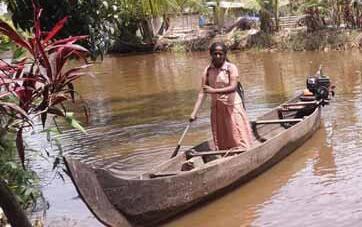


On the cover: Waheed Khan, a beneficiary of the prosthetic hand fitment camp organised by RCs Jammu Aastha and Jammu Midtown, D 3070. 12 20 32

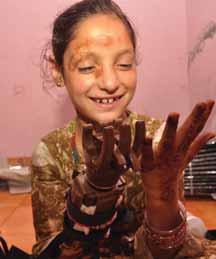

28

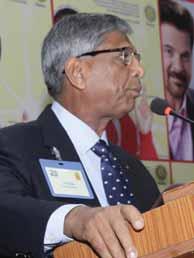
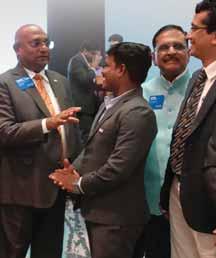
68 A park where children can touch, feel and learn
RC Manjeri develops a novel park and provides a learning ground for the visually-challenged.

42




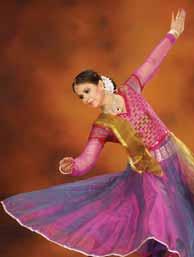
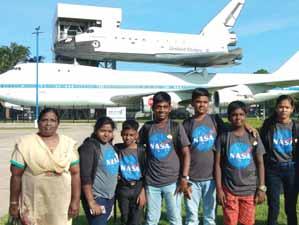
Congrats for the excellent coverage on the generosity of Rtn D Ravishankar who has donated `100 crore to TRF. Only once-ina-lifetime we come across a family such as Ravishankar’s. May the Lord keep them healthy and happy.
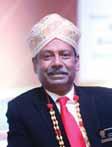
Robert Franklin Rego
RC Bajpe — D 3181
As an elderly person, I don’t read magazines regularly, but the headline A single gift of `100 crore to TRF attracted me. I was so touched by Ravishankar’s views and philosophy that I circulated copies of this article among my children and grandchildren.
Trilochan Singh RC Delhi — D 3011
The life story of D Ravishankar is astounding and its message is that giving is more important than receiving. He has rocked the Rotary world by his exemplary donation.
Arun Kumar Dash RC Baripada — D 3262
Every Rotarian must salute D Ravishankar for his gift of `100 crore to TRF and his simplicity. This will motivate many to donate substantially to the Foundation. Congrats for bringing out such a nice article on him. Meet Your Governors is interesting. The centrespread with pictures of newly-elected DGs on the map of India is an innovative and useful idea.
S Rangarajan, RC Tirunelveli Suburbs D 3212
You have provided an 8-page coverage of D Ravishankar’s unparalleled contribution to the Foundation. He says, “I am only a co-worker and can’t lead leaders”; a great message for Rotarians. A Rotarian for 14 years, I salute this leader who has reached out to people in the Northeast and Pakistan.
K Devarajan
RC Coimbatore East — D 3201
Ravishankar’s story clean bowled me! It’s not just the `100 crore he donated, but his life theory is super inspiring. I wish him and his family the best.
Atul Bhide
RC Thane Hills — D 3142
Aninspiring gesture by D Ravishankar was brought out in vivid details by a terrific story. The article makes us think: What drives a man to contribute so much; the lessons to learn; what more can the rest of us do.
Nilanjan Dey, RC Calcutta Bhowanipore — D 3291
Happy to read a very emotional and exceptional article on Ravishankar’s donation of `100 crore to TRF. I am sure with this, many more will come forward to emulate him.
G P Capt Deodhar
RC Nasik — D 3030
Ravishankar’s contribution is inspirational, and truly reflects the Rotary motto Service above Self May God bless him and his family.
T N Nazimuddin
RC Tellichery — D 3202
Great content, high calibre
As a regular reader of Rotary News, I find the content worth reading and the magazine of high calibre. Shakti Sinha deserves kudos for the way he portrayed Atalji. RC Madurai Next Gen’s initiative in connecting employees with job seekers should be followed by elite clubs in big cities. The Gift of Life project facilitating heart surgery for children, undertaken by RC Greater Tezpur, is laudable as it cuts across borders, caste, creed and religion. Is your trainer fit for you by Sheela Nambiar is an eye-opener for fitness buffs. It is great to note that over 150 countries have brought out commemorative Rotary stamps. The support given to the people of Kerala during this difficult time is heart-warming.
MT Philip RC Trivandrum Suburban — D 3211
TheEditor’s note and other articles describing various projects are marvellous. I am a regular reader of the magazine and at 85, I enjoy reading the entire content. TMVenkataraman — D 3231
A request to RIPN Sushil Gupta Ihumbly request RIPN-designate Sushil Gupta to increase Rotary’s humanitarian projects as human relations are going through testing times. Rotary can strengthen our bond of love, affection and mutual respect. I wish him all success.
Dr NRUK Kartha RC Trivandrum Suburban — D 3211
Congrats to Sushil Gupta for being chosen as RIPN for 2020–21. When I interacted with him at a district conference, I found him sincere and dedicated to the community as well as Rotary.
As RI President Rassin calls for strong Rotary clubs to “do more good”, we need more new clubs with younger members to generate more enthusiasm. Articles like Eliminating measles and rubella from India are informative and inspirational. The coverage of club activities with photos in Club Matters is wonderful. Kudos to the Editorial team for coming out with a quality publication with colourful pages.
PRN Chandra Mouli
RCBerhampurMidtown—D3262
Kudos to RC Chandausi for running a charitable eye hospital for 60 years. But I feel the hospital should not charge more than `1,000 from poor patients, as it has sufficient reserve funds. We are doing annually 200 IOL implants at `1,200 per patient.
Shivraj Bhargava
RC Agra Taj City — D 3110
The September issue has some interesting articles; From a Leo to a Rotarian (Meet your Governors) reminded me of my younger days, and how in 1976 we had formed the first Leo Club of Calcutta.
Piyush Doshi, RC Belur D 3291
Membership retention is the key
To augment our membership, retention is the key. Any member leaving the club must be reported to a district committee and the reasons analysed. Often members leave due to differences with other members. Spouses joining Rotary should be given a 50 per cent concession.
Rakesh Bhatia, RC Belur D 3291
Great message from RI Director
The message from RI Director C Basker (Aug issue) is an absorbing one. Retention of members is critical for a club’s growth.
AR Bhaskar Raj
RC Sivakasi Central — D 3212
Director C Baskar’s message where he quotes Robert Frost: “I have miles to go before I sleep”, is inspiring. As he says, a lot of work has to be done in community service to create more awareness about Rotary. The project of RC Hyderabad Gachibowli giving girl students bicycles and sewing machines to the needy is praiseworthy, as also the Happy School project of RC Gwalior Imperial, D 3053, ensuring toilet blocks to schools.
Naveen RGarg, RC Sunam — D 3090
RI Director C Basker has nicely expressed how he gave RI President
Barry Rassin the great news of Rtn D Ravishankar donating ` 100 crore to TRF. This brings great pride to every Indian.
S Mohan
RC Madurai West — D 3000
An innovative project
The article Water wheels make fetching water easy has impressed us. A nice, innovative and productive project led by Rtn Amrish Daftary has changed the life of rural people carrying water over long distances. Under your editorship, Rotary News is making giant strides.
Paramesh Dev Choudhury
RC Gauhati South — D 3240
A wonderful Convention article
Thanks for the article It’s Rotary everywhere in Toronto (Aug issue), written in a lucid style and providing a wonderful read. Even though I missed the convention this time, I enjoyed the walk with the writer to the breakout sessions, House of Friendship and the whole venue celebrating Rotary Friendship. It was a delight to view the colourful flag march of 178 countries and listen to the renowned speakers through the writer’s expression of words, which radiated the exotic fragrance of our great Convention.
Giti Bujarbaruah
RC Gauhati South — D 3240
It was distressing to see only two women amongst 40 odd DGs in the centrespread picture mapping the present DGs. Rotary must do something to correct this skewed gender ratio. In our club we have two women poised to take
In the article Jaipur Rotary’s show of solidary in the September issue, the cost of the Physiotherapy and Dialysis Centre was wrongly mentioned as ` 2 lakh, instead of `2 crore.
over as club presidents in the next few years. We need a similar change at the district-level.
VG Deodhar, RC Nasik — D 3030
It is inspiring to read How to kick out a bad habit in the August issue. In step with this, can we stop providing liquor at district conferences, seminars and other Rotary events? Let us try this and see the impact on registration.
Srinath
RC Shimoga North — D 3182
A touching Editorial
The Editorial A season of heartbreaks and generosity in the August issue was insightful. RI President Barry Rassin’s message to start at home to build a strong organisation reminds us to follow Rotary principles, treating everybody with respect. RID Basker’s message was inspirational. I was touched by Ravishankar’s ` 100 crore donation to TRF. The August issue was a commendable one.
Om Prakash Modi RC Raigarh Steel City — D 3261
Club CoL with RI Convention
Vision Quest in the April issue gave us a glimpse of what RI President Barry Rassin thinks and wants to do. He has hit the nail on the head when he says that CoL as it stands is one of the challenges in Rotary. A wait of five years to accomplish change is simply unacceptable in today’s fast paced world. A welcome change was made at the last CoL by separating ‘Resolutions’, to be taken up annually by video conferencing. CoL could be made an annual meeting, along with the RI Convention, as done earlier. The work load will come down if it meets annually to sort out things. Limitation on the number of proposals/ enactments on a district or zone-wise basis and use of video conference and other technologies can result in a huge saving in cost and time.
PDG Rajkumar Vaiyapuri — D 3201
We welcome your feedback. Write to the Editor: rotarynews@rosaonline.org; rushbhagat@gmail.com
RI Dist 2981 DG S Piraiyon
RI Dist 2982 DG Nirmal Prakash A
RI Dist 3000 DG RVN Kannan
RI Dist 3011 DG Vinay Bhatia
RI Dist 3012 DG Subhash Jain
RI Dist 3020 DG Guddati Viswanadh
RI Dist 3030 DG Rajiv Sharma
RI Dist 3040 DG Gustad Anklesaria
RI Dist 3053 DG Priyesh Bhandari
RI Dist 3054 DG Neeraj Sogani
RI Dist 3060 DG Pinky Patel
RI Dist 3070 DG Barjesh Singhal
RI Dist 3080 DG Praveen Chander Goyal
RI Dist 3090 DG Dr Vishwa Bandhu Dixit
RI Dist 3100 DG Deepak Jain
RI Dist 3110 DG Arun Kumar Jain
RI Dist 3120 DG Stuti Agrawal
RI Dist 3131 DG Dr Shailesh Palekar
RI Dist 3132 DG Vishnu S Mondhe
RI Dist 3141 DG Shashi Sharma
RI Dist 3142 DG Dr Ashes Ganguly
RI Dist 3150 DG Ramesh Vangala
RI Dist 3160 DG Konidala Muni Girish
RI Dist 3170 DG Ravikiran Janradan Kulkarni
RI Dist 3181 DG Rohinath P
RI Dist 3182 DG Abhinandan A Shetty
RI Dist 3190 DG Suresh Hari S
RI Dist 3201 DG A Venkatachalapathy
RI Dist 3202 DG Dr E K Ummer
RI Dist 3211 DG E K Luke
RI Dist 3212 DG K Raja Gopalan
RI Dist 3231 DG C R Chandra Bob
RI Dist 3232 DG Babu Peram
RI Dist 3240 DG Dr Sayantan Gupta
RI Dist 3250 DG Kumar Prasad Sinha
RI Dist 3261 DG Nikhilesh M Trivedi
RI Dist 3262 DG Bhabani Prasad Chowdhury
RI Dist 3291 DG Mukul Sinha
Printed by P T Prabhakar at Rasi Graphics Pvt Ltd, 40, Peters Road, Royapettah, Chennai - 600 014, India, and published by P T Prabhakar on behalf of Rotary News Trust from Dugar Towers, 3rd Flr, 34, Marshalls Road, Egmore, Chennai 600 008. Editor: Rasheeda Bhagat.
Board of Permanent Trustees & Executive Committee
PRIP Rajendra K Saboo RI Dist 3080
PRIP Kalyan Banerjee RI Dist 3060
PRID Sudarshan Agarwal RI Dist 3011
PRID Panduranga Setty RI Dist 3190
PRID Sushil Gupta RI Dist 3011
PRID Ashok Mahajan RI Dist 3141
PRID Yash Pal Das RI Dist 3080
PRID Shekhar Mehta RI Dist 3291
PRID P T Prabhakar RI Dist 3232
PRID Dr Manoj D Desai RI Dist 3060
RID C Basker RI Dist 3000
TRF Trustee Gulam A Vahanvaty RI Dist 3141
RIDE Dr Bharat Pandya RI Dist 3141
RIDE Kamal Sanghvi RI Dist 3250
Executive Committee Members (2018–19)
DG Rajiv Sharma RI Dist 3030
Chair – Governors Council
DG Pinky Patel RI Dist 3060
Secretary – Governors Council
DG Subhash Jain RI Dist 3012
Secretary – Executive Committee
DG A Venkatachalapathy RI Dist 3201
Treasurer – Executive Committee
DG Shashi Sharma RI Dist 3141
Member – Advisory Committee
ROTARY NEWS / ROTARY SAMACHAR Editor Rasheeda Bhagat Senior Assistant Editor Jaishree Padmanabhan
Send all correspondence and subscriptions to
ROTARY NEWS TRUST
3rd Floor, Dugar Towers, 34 Marshalls Road, Egmore Chennai 600 008, India. Phone : 044 42145666
e-mail: rotarynews@rosaonline.org Website : www.rotarynewsonline.org
The views expressed by contributors are not necessarily those of the Editor orTrustees of Rotary NewsTrust (RNT) or Rotary International (RI). No liability can be accepted for any loss arising from editorial or advertisement content. Contributions – original content – are welcome but the Editor reserves the right to edit for clarity or length. Content can be reproduced, but with permission from RNT

While barely a month ago we had the sensational news of a single Rotarian from Bengaluru — D Ravishankar — making a stunning donation of `100 crore to The Rotary Foundation, this month we have heartwarming news of the alacrity and speed with which Rotarians in Kerala and outside acted to bring relief, sustenance and succour to the thousands devastated by the worst floods in a century in this southern State.
My colleague Jaishree, who made a two-day visit to the worst affected areas such as Kuttanad, Kottayam, Kumarakom and Alleppey, planned by District 3211 DG E K Luke, was overwhelmed by the devastation, grief and agony she saw in those areas. Houses broken, tilted due to soil erosion or simply washed away; people returning to their homes after the flood waters had receded, to find their belongings washed away or covered under mounds of silt and hence unusable. The irony that struck her was that normally the rest of India goes to Kerala mainly to enjoy its backwaters, and a day or two on its houseboats is the icing on the cake. But this time around, she had no other option rather than use boats to survey the devastation that had taken place and how Kerala’s Rotarians were helping the people to pick up the threads of dayto-day life.
Tina Antony, District Coordinator for Flood Relief, and other Rotarians accompanying Jaishree explained to her how the fishermen, who had lost their livelihood for days, along with their fishing nets that were washed away, swung into action, using their boats to rescue trapped people. Even as nature’s fury, combined with man’s greed
and destruction of precious ecosystems, wreaked havoc on the hapless people of the State, and people were moved into relief camps, Rotarians in Districts 3211, 3201 and 3202 swung into action. “Rotary was the first to come up with food packets, water bottles and dry clothes, as soon as people were evacuated to safety. We were everywhere,” says Tina. Whether it is cleaning operations, distribution of relief material such as medicines, sanitary napkins, diapers and clothes, or medical camps, the Rotary footprint is seen all across the devastated region. A Trust is being formed under the leadership of Past RI President Kalyan Banerjee who has toured the region to survey the destruction, particularly the loss of homes. Armed with rich experience from the challenge of building low-cost shelters in the earthquake devastated Kutch region of Gujarat in 2001–02, Banerjee has advised the local Rotary clubs to apply for global grants as Rotary undertakes the task of putting up 3,000 low-cost shelters.
As women Rotarians, Anns and Annets roll up their sleeves and work shoulder-to-shoulder with the male Rotarians to lessen the pain and wipe the tears of the flood-affected, it is in little gestures, such as handing out packets of sanitary napkins in one village or adult diapers in another, the real impact of why more voices are being raised in Rotary International and Rotary India to get more women into the organisation, hits you. Read the article Rotary swings into action to help Kerala on Pg 12 to get even more inspired and proud of the organisation you belong to.
Rasheeda Bhagat
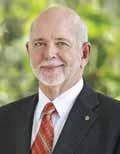
Dear fellow Rotarians,
Every Thursday morning, I receive an email from the World Health Organisation with an update on the status of polio eradication. It contains a wealth of information, country by country: where and how immunisation campaigns are being conducted, how many millions of children are being vaccinated, and where environmental surveillance has found evidence of circulating virus. But every week, when that email appears in my inbox, my heart seems to stop for just a moment until I read the first few lines — and learn whether a child was paralysed by wild poliovirus that week.
That, my friends, is where we are today in the work of polio eradication. The question on my mind as I open that message isn’t how many thousands of cases we might see in a year, as we did not too long ago, or even how many hundreds. Instead, when that WHO email arrives every Thursday, the single, binary question it answers is: Was there a new case this week, or wasn’t there?
Thirty years ago, 1,000 children were paralysed by polio every single day. Since then, we’ve marked our progress, year by year, week by week. We’ve celebrated as country after country, region after region has been declared polio-free. As we’ve come closer and closer to our goal, and the number of
cases has dropped further and further, the children those numbers reflect have become less and less of an abstraction. When I open that Thursday email, I don’t wonder what number I’ll see. I wonder, was a child paralysed this week or not?
We are so close to eradication — but there is so much work left to do.
This month, I ask every Rotary club to help End Polio Now by marking World Polio Day on October 24. Last year, thousands of Rotary clubs around the world held events to raise awareness and funds for polio eradication. This year, we want to see more World Polio Day events registered than ever. If you have an event planned, be sure to register and promote it at endpolio.org so that more people can take part. If you haven’t planned one yet, it’s not too late — visit endpolio.org to find ideas, information on this year’s livestream, and resources to help your club organise a successful event.
World Polio Day is a tremendous opportunity for clubs to highlight Rotary, and our historic work to eradicate polio, in their own communities. It is also a great way to take advantage of the challenge from the Bill & Melinda Gates Foundation: For every dollar that Rotary raises for polio eradication, the Gates Foundation will give two more. Join me, and Rotarians everywhere, on October 24 for World Polio Day — and Be the Inspiration for a polio-free world.
Barry Rassin President, Rotary International
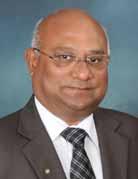
Dear Rotarians, Mahatma Gandhi — the Father of the Nation — often said that true independence could be enjoyed only when communities are strengthened and poverty eradicated.
I share here the success story of Chetna, who grew up in a middle class family in Mumbai, came to a drought-stricken region of western Maharashtra to marry a farmer and prominent local social activist. She put her university degree in finance into action. Local women, she observed, were wearing themselves out in subsistence livelihood such as growing grapes or selling vegetables. In 1992, she began organising them into self-help and savings groups that helped them share technical knowledge, lower their costs through bulk buying and manage their money better.
But Chetna quickly realised that the women also needed business loans. However, conventional banks wouldn’t lend to them because of their low income. So in 1994, she applied for a licence to run a bank on behalf of 500 rural women. The Reserve Bank of India rejected the application because, except for Chetna, all the women identified themselves with a thumbprint and, according to RBI, directors of a bank had to know how to read and write. Undaunted, Chetna, who was in her 40s, set up literacy classes
that eventually went beyond simple word recognition. The women were also taught how to calculate interest on principal. She recalls, “we gave the proposal to RBI again three years later and received the licence. That is how The Mann Deshi Mahila Sahakari Bank was started with 500 women and around `5,00,000 in their credit pool.” It took three years for the bank to become fully sustainable. Today, it has more than 1.4 lakh clients and deposits of over `3.78 crores.
If rural women with no formal education are to break the cycle of poverty, they need more than a few small loans. Chetna says the bank is scrupulous about accountability, with internal audits every quarter, annual audit by the cooperative department and an inspection by the central bank every four years. Chetna’s story is very inspiring. There are many Chetnas among us. All they need is encouragement and support from people and organisations like ours.
Rotary focuses on service to the community through voluntary action. The main characteristic of Rotary is human touch. Dedication of the Rotarians, their relationship with the community, flexibility in the programmes they lead and innovative approaches to problem-solving will result in greater success.
Be the Inspiration. Inspire each other and together let’s change the world.

C Basker Director, Rotary International


Kerala is yet to recover from the deluge described as “the worst since 1924”, and tens of thousands of the affected people are struggling to pick up the threads of their devastated lives.
Two spells of heavy rainfall during July-August killed around 500 and left several thousands homeless. Damage to property ran into crores of rupees; thousands of cattle and poultry were washed away and fish farms destroyed. Thirty-five of the 54 dams in the State had to be opened as they were filled to capacity; all the five overflow shutters of the Idukki dam were opened simultaneously, causing landslides in the hilly Wayanad and Idukki. Almost all the districts suffered heavy damage.
All schools, colleges, community halls and places of worship were transformed into relief camps and people kept pouring in by thousands. The affluent threw open their homes to accommodate people, and fed and clothed them too.
As Rotary India swung into action, helping in relief and planning rehabilitation, I made a two-day visit across the badly affected regions of Kuttanad, Kottayam, Kumarakom and Alleppey, with the help of D 3211 DG E K Luke, which brought me face-to-face with the agony of the people there. These places were just a sample of the
extensive damage the floods have wreaked across the State.
Houses are broken or have been washed away. Some of them look tilted due to the soil erosion. Several hamlets are unapproachable by road and could be reached only by boats. Accompanied by Assistant Governors Saji Matthews and Jittu Sebastian, and Rtn Tina Antony, District Chief Coordinator for Flood Relief, as I sail over the backwaters in Kuttanad, the shores of which are lined with huts and concrete houses of various sizes and shapes, the irony of a bountiful nature, which has bestowed such lush greenery and beauty to the region, turning its fury on the State and its people, hits me hard.
And yet the most affected people greet us with a kindly smile and offer tender coconut water as we step into the devastated remains of their homes.
We pull up by the banks at the doorsteps of a forlorn-looking Shantha in one of the tiny hamlets that dot Kuttanad. She has just got back from a relief camp and shows us what remains of her home. The roof has vanished and in its place is a blue plastic sheet dotted with holes. Tin sheets make up the surrounding walls and there is no flooring left. Her paralysed husband is sleeping in a corner on a wooden
cot, the legs of which are broken and is supported by hollow block bricks.
Seeing the Rotarians, her face lights up. Members from the Rotary clubs of Kottayam had rescued these villagers and are now engaged in rehabilitating them. “I was shocked to see my home, which I couldn’t even identify. The few vessels I had, were washed away,” she says tearfully.
While this was the state of the mud houses, the concrete houses had a different story. Television sets, mattresses and other home appliances were kept out to dry in the sun. As the water level increased the residents had moved to the first floor or the roof after rescuing household articles to the extent possible.
“Kuttanad, a reclaimed land from the Vembanad lake, is prone to flooding as it is 7–10 feet below sea level. People are used to the floods every monsoon, but this one took them unawares. The tide was high and there was so much water that the sea just couldn’t accept it, and pushed it right back on to the land,” explains Sebastian.
He says the water level rose up to nine feet in most place and boats had to be deployed to take people to safety. When the rain stopped and people started getting back to their homes, the Rotarians brought vessels and provisions, mattresses, blankets and

Houses damaged by the floods.

clothes for the families at Kuttanad and elsewhere, to enable them to start their life all over again. This was the scenario all over the State with Rotarians pitching in with all possible help for the affected.
As we set sail again, Matthews shows me a vast waterbody behind the houses on the shore. “This is not a lake; it is acres of paddy fields that are still submerged in water.” The rains came soon after the people had sown the seeds and now everything is gone. The people around here are farmers owning about 2–5 acres of land. Fishing is another major occupation here. “Unfortunately, both activities were
badly hit and several of them have not gone fishing as they have lost their fishing nets,” he says.
As we stop over at another house, it is startling to find 13-year-old Arathi jump into a boat and row it all by herself to cross over from the other side of the waters to her home. She is in her school uniform and as the bridge is broken and the roads inaccessible, this is the alternative mode of commute to school and back for many like her in the area.
The region is dotted with resorts and houseboats and “business has taken a beating first due to the Nipah virus and now the floods,” points out Tina. She says fishermen played a huge

role in reaching out to homes inaccessible by road or air. “They are the real heroes. They came with their boats from various parts of the State for the rescue operations, braving the rain. As most of the houses have slanting roofs, and cables run criss-cross overhead, it was impossible for helicopters to rescue people in some places.”
At Alleppey, Vijayalaksmi Nair and Presidents Antony Malayil and Antony Fernandes of RCs Alleppey and Coir City take me to Chungam, an area with 610 houses, all badly damaged. The EDLP School in Pallathurty is a picture of despair. Computers are beyond repair. Soggy text and exercise
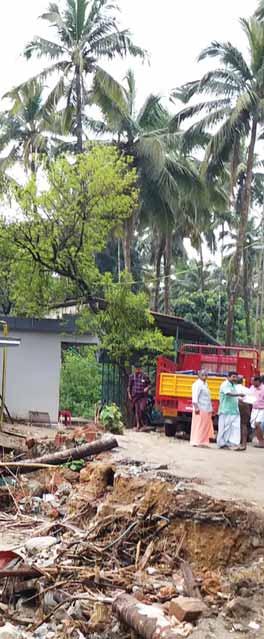
books of the children and the teachers’ reference material are all being dried in the sun. “Please arrange for some computers for the schools,” pleads the school headmistress to Vijayalakshmi. She is the Contacting Officer of the District Relief Collection Centres and in charge of distributing the relief material received, to the various Rotary clubs in the district.
Rotary’s magic touch
When the rains lashed and relief camps were set up by the State, Rotarians in Districts 3211, 3201 and 3202, sprang into action. “Rotary was the first to come up with food packets, water
Baby, a resident of Alleppey, with her dismantled television set spread out to dry in the sun.


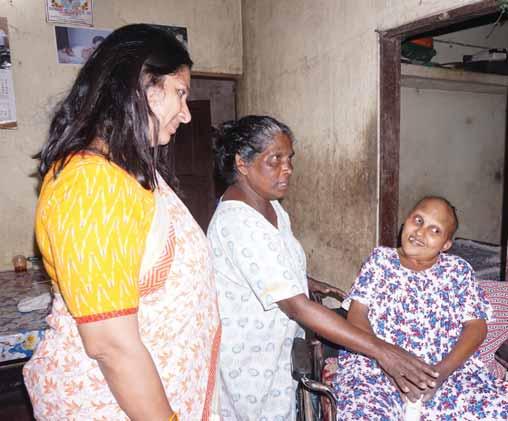
Rtn Nisha Mani visits Josimol Jose, an autistic patient she rescued during the floods.

bottles and dry clothes, as soon as people were evacuated to safety. We were everywhere,” says Tina.
There were people who were starving for days together, huddled up on the first floor or roofs of their buildings.
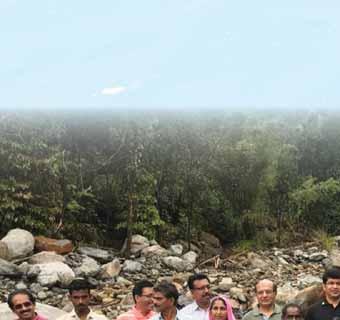
“We carried food packets with us when we went to rescue people,” says Nisha Mani, a member of RC Pala and daughter of PDG John C Neroth. A trained life guard and a die hard social worker, she is a big hit with the communities
RIDE Kamal Sanghvi, D 3202 DGE A Karthikeyan, DG Dr E K Ummer and PDG Dr E K Sagadhevan after distributing shelter kits to beneficiaries.
around Kumarakom. She insists that I meet a ‘special friend’ as she takes me into a house where an excited Josimol Jose (30) greets her enthusiastically. The autistic woman confined to a wheelchair, and her aged mother, were rescued by Nisha and other Rotarians and moved to safety in a boat. “It was dusk and pouring. There was at least four-foot water all over. We halfwaded, half-rowed the boats down into this lane to save around 100 people. The risk involved hit us only when we saw this lane in broad daylight,” she says. There is a broad canal by the road and the houses are built in a low-lying area. We leave Josimol’s house after Nisha thoughtfully hands over some adult diaper packets to the mother.
Adds Nisha, “Most of the houses have open sewers. But during the floods, none of us gave a thought to the filth around. Our focus was to save the trapped people.”
After the deluge
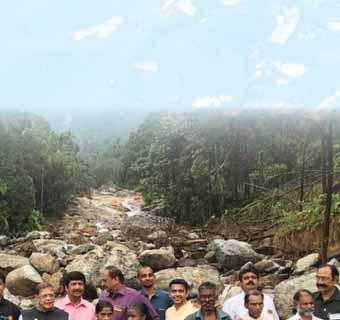
“Our real work began only after the rains,” says Tina. The biggest challenge was to clean the slush left behind by the receding waters. “We distributed tons and tons of bleaching powder, and helped to scrub the floors.” Each club




DG E K Luke, PDGs John C Neroth, K S Sasi Kumar, RC Trivandrum Capital President Santosh Kumar, Rtn K Babumon, AG Shivakumar and Rtn Vijayalakshmi Nair with the State Minister for Civil Supplies P Thilothaman (second from left) provide relief material to a flood victim.
adopted a ward of 1,000 houses and distributed kits containing cleaning material, buckets, mops, mugs, new clothes, bedsheets and other essential items. There was no power supply, so the Rotarians carried gensets.
At Alleppey DG Luke invites me to participate in a distribution

programme where RC Trivandrum Central gave out kits containing a wooden desk, plastic chairs, mop, buckets, broom, a gas stove, vessels etc to the people.
Borders thinned and Rotarians came together from all parts of the district, across the country and the
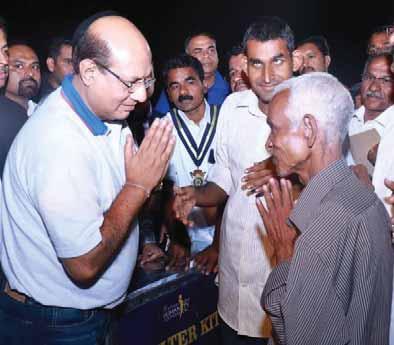
globe to provide help for the flood victims. The coordination between clubs was so perfect that they called each other and rushed things to places where there was shortage. Truckloads of goods came in from various clubs. “RC Nanganallur in Chennai not only sent truckload of goods, three Rotarians came along to Alleppey to provide moral support.” Mannar was badly affected by the Pampa River and the houses of 13 Rotarians of RC Mannar were damaged. “Despite that they were on the ground extending help for the others,” says Tina.
“The Anns and Annets also got involved in the relief work,” says Susann Koshy of RC Kottayam referring to Dr Rebecca Philipose (21), daughter of club member Dr Philipose. This club is doing extensive work around Kottayam.
Medical camps are being organised by the clubs in various areas to treat people for skin infection, fever, cold, and check spread of epidemics. A psychiatrist was also part of some of the teams to treat people suffering from depression, an aftermath of the devastation.


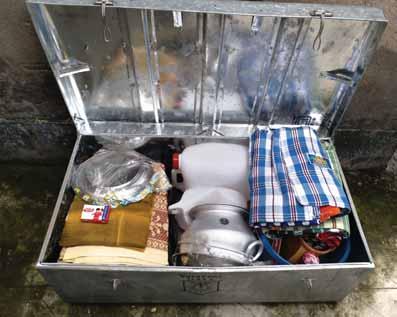
The ’Dil-se Act for Kerala’ is one of the first housing projects being implemented under a global grant by RC Cochin Midtown and Rotary Bandar Sg Petani, D 3300, Malaysia, to provide houses for the homeless.
RIDE Kamal Sanghvi led a shelter kit project, along with the DGEs of various districts, whereby 1,000 kits

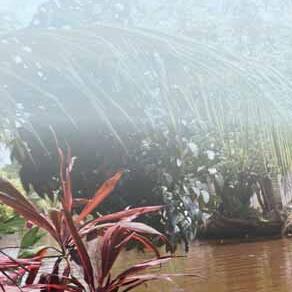
were provided in various parts of the State, under the Rotary India Humanity Foundation. Each kit contains a tent, some utensils and clothes for a family of four.
Project Hope is a joint initiative of the Rotary clubs of UK and Kerala, through which D 1120 provided water filters for schools in the State, while

D 1220 sent 500 household and community filters. RC Kalamaserry, along with RC Kandy, D 3220, Sri Lanka, is helping small entrepreneurs restart their lives through a global grant. A mattress manufacturer was given an industrial sewing machine, an autorickshaw driver got a new vehicle and a saree-seller got fresh stock of sarees. While the Rotarians of RC Cochin Milan is donating utensils, RC Cochin Cosmos is focusing on providing wheelchairs, walkers, artificial limbs, hearing aids and waterbeds for the differently-abled.
RC Coimbatore Sai City, D 3201, sent a truckload of groceries worth `30 lakh. Katrina Langrova, a youth exchange student from the Czech Republic hosted by RC Coimbatore Cosmopolitan, inspired by the spontaneity of the Rotarians, contributed her stipend for the flood relief, says DG A V Pathy. Fundraisers are being organised in various districts across the country and abroad, and contributions keep coming in for relief work. Rotaractors and Interactors are also playing their part.






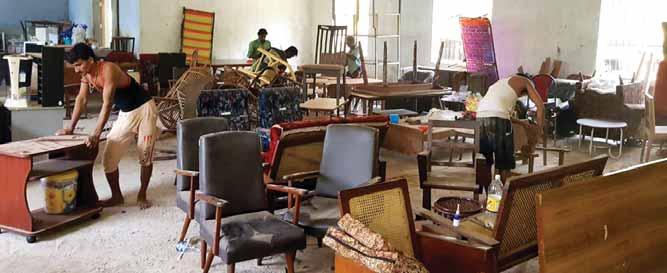
Earlier PRIP Kalyan Banerjee toured the flood affected regions of Alleppey and Kuttanad accompanied by DG Luke. Banerjee, along with Director C Basker, later met the governors of Districts 3211, 3201 and 3202 — E K Luke, A V Pathy and E K Ummer — and suggested that a Trust be formed to receive funds for the extensive rehabilitation work. It will be jointly managed by the three governors. “The Trust has been registered and whatever funds the districts have received so far will go into it. A budget of `100 crore has been earmarked for rehabilitation work in all the three districts. PRIP Banerjee has said that the districts can apply for global grant for construction of 3,000 low-cost shelters, each around 300 sq ft,” said Luke.
“We have identified few places like Kuttanad where there is an urgent need for homes. Thankfully, most of the villagers do hold a valid title deed to the land,” says Tina. “We will build a Rotary village by concentrating the homes together in one area so that it can also make a visible impact,” says Luke.
It was PDG Reghunath who came up with this concept at Thiruvananthapuram. People everywhere have lost their
home appliances, mattresses and furniture. So to help them equip their homes, Mission New Life was designed, “where we refurbish used furniture/appliances donated by people and provide them for the needy. We have in place a whole team of carpenters, electricians and other technicians across the districts. They will repair the goods and make them fit for reuse,” says Tina, adding that the clubs were planning to organise a roadshow the following day to popularise the concept in Alleppey.
Stanley, a premier furniture manufacturer, is donating a large quantity of furniture for Mission New Life, says M C Jacob of RC Trivandrum.
Nisha regaled me with some of the lighter moments which at that point of time were lost under the gravity of the situation. She was on a boat in one of the areas in Kuttanad and as she put out her hand to help a man climb in, he just thrust a goat into her hand, asking her to save the goat and hand it over to his wife who was “in some camp.” After much persuasion, the man climbed on to the boat, but not before ensuring that his goat came with him. “In the process, the
animal peed all over my face, making my friends comment that it makes a good facial!”
On another occasion she spotted a little boy in a camp holding a viper. She took it from him and put it into one of the baskets she was carrying and quietly kept it on the gearbox of her car, without informing her friends who were travelling with her. “I kept sliding glances into the basket to see if the fellow was intact.” After dropping off her friends, she took the reptile to a forest officer to be let out into the forests. “He was so irritated with me. Why did you bring him to me? Now he is my responsibility, he kept whimpering. And after some cajoling I entrusted the snake to him, and also managed to get a signed receipt!”
Brimming with stories of loss, heroism and love, the region is a microcosm of humanity in times of peril. Each one has a story to relate and as much as the devastations, the compassion and empathy of the Good Samaritans will also be etched in people’s memory forever. As Susann remarks, “They all have put their heart and soul so selflessly for humanity.”
Pictures by Jaishree
Designed by N Krishnamurthy

Rasheeda Bhagat



The seven-year-old strikingly beautiful girl with sparkling eyes, Afsha Tabassum, from Kishtwar, about 212 km from Jammu, was jumping with joy after getting a brand-new hand, which was a replacement for the hand she had lost in a burn accident when she was only a year old. She was so happy when she was shown a video of people driving two wheelers with LN-4 Hands, the replica of the new hand she had got, that she said with determination: “One day I will drive a car with this new hand”.
Kashmir, who had a birth defect and was born with the entire palm missing on his right arm, was wonderstruck and kept looking at the new hand he had just got.

The youngest recipient of this prosthetic hand, six-year-old Raza Azmat Khan from Budgam,

Little Afsha Tabassum admiring her ‘new hand’.
It wasn’t exactly a mela, but the atmosphere was carnival-like at the camp organised by the Rotary Clubs of Jammu Aastha and Jammu Midtown, RI District 3070, in partnership with RC Poona Downtown, District 3131, for a project to fit upper limbs for those who were living for years with only stumps for hands.

There was no lack of human-interest stories and there were both tears and smiles at the camp held to implement the meticulously organised project of these clubs titled ‘New
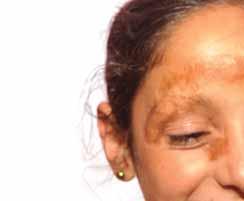

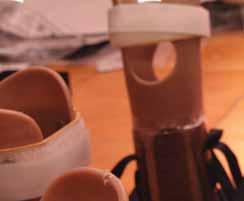

Hands for Handless’. “We had recipients of this gift ranging from the age of 6 to 90. The seven-yearold boy Ashid Hussain from Mendhar, Poonch, who had lost his hand in a landmine blast a few months back was overjoyed to receive a hand with which he could play and do all his daily chores. At the same time, we also had a senior citizen, 90-year-old Parma Nand, a farmer from Kore Punnu, Kathua, Jammu, who was getting the gift of a new hand which he had lost some 34 years ago while working on his




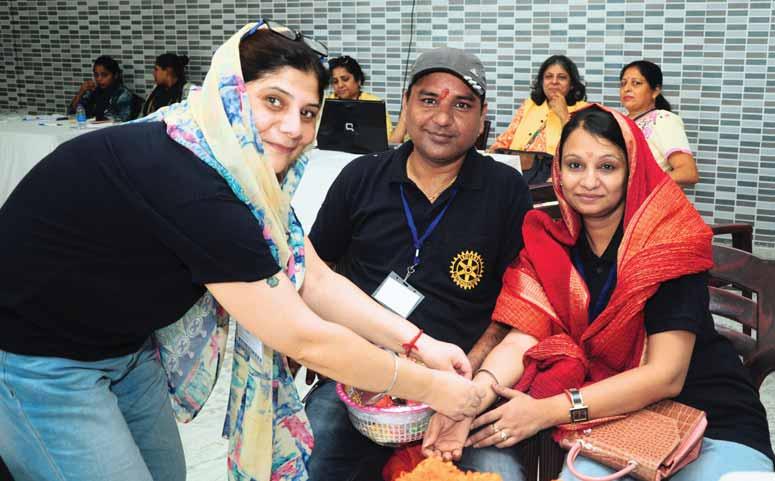


farm,” says Sumil Goyal, Project Director, LN-4 Hands Camp, Jammu.
He recalls the “emotionally charged atmosphere” at the camp where people were very happy but also had tears in their eyes. One of the girls, Arti, could not stop crying after

getting the LN-4 Hand because she had come to the camp without informing her parents about the camp. Kirn Bharti cried with joy because she could now operate her laptop using both her hands, including the brand new left one she had acquired at the camp.
“We were all moved by these emotions which left a lasting impact on all the volunteers and Rotarians who enjoyed giving their time and service to fulfill Rotary’s motto: Service Above Self,” he added.
The genesis
The camp, attended by 123 people, including 29 from
Seven-year-old Afsha Tabassum from Jammu, a beneficiary, when shown a picture of someone fitted with an LN-4 Hand driving a two-wheeler said with determination: ‘One day
I will drive a car with this new hand’.
Haryana, Punjab, and far away States such as Bihar, Chhattisgarh, Madhya Pradesh and Uttar Pradesh, had its roots in one of the 250 emails sent out to all Rotary clubs from RC Poona Downtown on Feb 4, 2018, catching the attention of Goyal from RC Jammu Aastha, who was then the Assistant Governor of D 3070. The
mail was an introduction, he says, to the LN-4 Prosthetic Hand (see Box). Curious, he watched several YouTube videos on this prosthetic limb, and impressed by the good it could do, discussed at his club meeting the possibility of doing such a project.
“But the main concern of our club members
was that it would not be worthwhile to undertake a project of around `3 lakh that would benefit only a few people. But they were assured that if they worked hard and with passion, the project could be scaled up to benefit about 150 people at the same cost,” he recalls.
The donors
This was possible because even though each prosthesis costs around `30,000 in India, the LN-4 Hands
were sourced free of cost from the Ellen Meadows Prosthetic Hands Foundation in the US. This prosthetic hand has been designed and donated by the American couple Ernie and Marj Meadows. Says Anil Chadda, Chairman LN-4 Project Committee, RC Poona Downtown: “Ernie Meadows is an industrial designer with long years of experience and work in developing a functional, inexpensive, below-elbow
Originally designed by Ernie Meadows, an American, for young victims of land mines, the LN-4 Hand has benefitted hundreds of people, children and adults, beyond the original intent.
Anil Chadda, Chairman LN-4 Project Committee, RC Poona Downtown
prosthetic hand which we now know as the LN-4. Originally designed for young victims of land mines, it has benefitted hundreds of people, children and adults, beyond the original intent.” The LN-4 Hand Committee headed by him has organised 34 such camps across India to give hands to over 3,300 handless.
Prem Nath of Jammu rides a scooter with his prosthetic hand.

Later, the LN-4 prosthetic was created “to honour the memory of Ellen Meadows, their daughter who died in an automobile accident at the tender age of 18. The name LN is short for Ellen.” Their motto, carried on their website, says: “Our mission is to inspire change in the world by empowering individuals to support the gift of a light, durable, functional prosthetic hand to people in need. Our LN-4 Hands are distributed around the world at no cost to recipients. We will not stop until anyone who needs a prosthetic hand has access to one.”
Idea of a camp is born Returning to Jammu from the US, once RC Jammu Aastha members were convinced of the impact this project could make,
and Kashmir

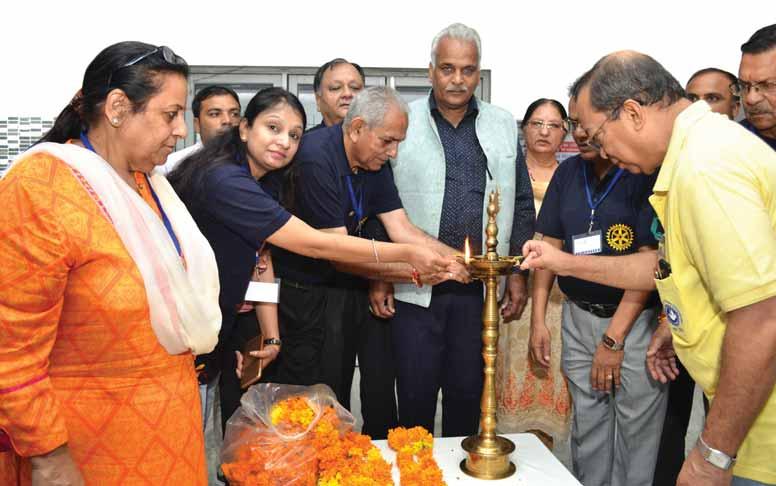
it was decided to hold the camp in Jammu on Aug 26, which happened to be the auspicious occasion of Raksha Bandhan. The date was finalised based on the availability of the Aggarwal Dharamshala in in the city which was free after the Amarnath Yatra and was given to the Rotarians free of cost.
From April, work began for this project which was “meticulously planned under the experienced guidance of Chadda,” says Goyal. Even though his club set the ball rolling, an invaluable partnership was born when by June-end they had only 43 registrations. Thus RC Jammu Midtown
came on board and the constraints in both raising funds and finding beneficiaries were overcome. The camp was inaugurated by Ramesh Arora, Member, Legislative Council, J&K.
With Rotarians from both the clubs working in perfect coordination, whether in finding beneficiaries or volunteering various services at the camp varying from organising food to counselling services to ensuring good media coverage to boost Rotary’s public image, the camp became a runaway success. “This was a rare example of excellent coordination between two host clubs in Jammu,” says
Rtn Pradeep Munot, founder of the LN-4 project.
Estimated cost
On the estimated cost of each hand, Goyal says, “We can only guess the direct cost of an LN-4 prosthetic hand to be $200–250. This is assuming only direct costs and no markups. The cheapest
hands in India cost over `30,000 and are only cosmetic in nature. The LN-4 Hand has great functionality as it can pinch or clamp any object such as a toothbrush, fork, spoon, pen, mug, etc. The list is endless.”
On how exactly it works, he says the LN-4 is strapped on to the
The LN-4 hand has great functionality as it can pinch or clamp any object such as a toothbrush, fork, spoon, pen, mug, etc. The list is endless.
Sumil Goyal Project Director, LN-4 Hand Camp, Jammu
AroundSeptember 2013, a meeting of Gift of Mobility Committee of our Rotary Club of Poona Downtown was convened by Rtn Shabbir Jamnagarwala. I try to be 100 percenter at Shabbirbhai’s meetings because it is always a wada-paav meeting with a bonus of moong daal ka bhajiya at times. Shabbir, as usual, was serious. While surfing the Internet he had discovered the prosthetic hand LN-4. He was very much impressed and wanted us to take up the project. My tradition is always being that of opposition. I faithfully opposed. My plea was, we should operate within our limits. We are not geared to take up big projects like this. But Shabbir, as usual, remained firm and determined, and rest of us reluctantly followed.
After many meetings, correspondence, phone calls, we finally announced our first LN-4 camp on Jan 11 and 12, 2014. But we were nervous. Though at Shabbir’s insistence, we all had watched the videos from the LN-4 website and YouTube, we were still not confident and worried because it was altogether a new field. At our request two trained persons were sent for our assistance from Bengaluru. The camp turned out to be a huge success. The smiles on 74 faces were such a big reward that we decided
to hold a follow-up camp on April 20, 2014.
Next year was a little low with two small camps in March and June, but these paved way to huge success stories never ever dreamt of. I was introduced to Tarun Mishra, a dynamic young Rotarian from Indore. Tarun and the then DGE Sanjeev Gupta were so much impressed with our presentation
that they decided to launch it as their district project. It was presented at their PETS and the response was tremendous. We joined hands with RC Indore Uptown, D 3040, and volunteered at the camp in Indore in August 2015 with nine volunteers. Our DG from D 3131 Subodh Joshi too joined our team in Indore. The turnout was 155 hands. We trained the Indore volunteers and they further conducted many more camps independently.
This was followed by Jamnagar. During his personal visit to Jamnagar, Shabbir reached out to Jamnagar Rotarians and the Indore success was replicated. The Jamnagar team too conducted more camps independently and has continued this activity by arranging distribution of hands on one Sunday every month. From last year our committee chairman Anil Chadda has started

A beneficiary experimenting to write with his new hand.
sending mass e-mails to presidents and secretaries of Rotary clubs all over India introducing them to this novel project. And we are getting responses pan India.
So far we have conducted 34 LN-4 camps in States of Maharashtra, Madhya Pradesh, Gujarat, Rajasthan, Tamil Nadu, Bihar, Karnataka, Uttar Pradesh, Telangana, Jammu and Kashmir, in places like Indore, Dondaicha, Jamnagar, Kopargaon, Latur, Achalpur, Udgir, Kalyan, Vapi, Kuli (Jaipur), Satara, Nandurbar, Panvel, Shirdi, Madurai, Darbhanga, Bhagalpur, Raichur, Allahabad, Nizamabad, Chennai, Solapur, Triambakeshwar and Jammu. Our teammate Vikramjit Mehmi remarks that for the first time in history after Peshwa Bajirao, Pune’s flag is held high at so many places!
We worked in collaboration with 23 Rotary clubs — Indore Uptown, Dondaicha Seniors, Jamnagar, Pune Sarasbaug, Pune Inspira, Latur Horizon, Achalpur, Udgir Central, Kalyan, Vapi, Jaipur, Jaipur Majesty, Panvel Midtown, Madurai Malligai, Darbhanga, Vikramshila Pink, Cotton City Raichur, Allahabad North, Nizamabad, Madras Centenary Commemoration, Solapur, Jammu Aastha, Jammu Midtown — one Innerwheel Club of Satara, Lions Club of Kopargaon and the NGOs Maharashtra Arogya Mandal, Vivekanand Hospital and Bharat Vikas Parishad.
Permanent LN-4 centres are established in Pune, Kalyan, Jaipur, Vapi, Jamnagar,
Nizamabad; and Raichur and Latur are on the way too. The cumulative number of hands fitted is 3,310 so far.
Right from the beginning in 2013, we were guided and supported by past president K V Mohankumar of Bengaluru and we are grateful to him. Both he and the Ellen Meadows Foundation were very much happy and appreciative with this huge, unprecedented turnout and especially the ‘ripple’ effect in Indore, Jamnagar and Jaipur. Our club is included in their prestigious ‘List of Partners’.
Last year Shabbir and myself were conferred the ‘Distinguished Service Award’ from the Ellen Meadows Foundation. We are maintaining close contact with associate clubs — Indore Uptown, Jamnagar, Jaipur Majesty and keep sharing innovations.
Team LN-4 is grateful to all the members of RC Pune Downtown for their continued support. I salute my colleagues of Team LN-4 consisting a big number of non-Rotarians too, and express gratitude to our leader Shabbir. It is his vision and determination that has led us through this very satisfying wonderful journey. This project has given us so many friends all over the country. But the immense satisfaction on seeing happiness on the faces of recipients is the real reward.
And, believe me, it all started with a wada-paav!
The writer is a member of the LN-4 Hand Committee of RC Poona Downtown.
So far we have conducted 34 LN-4 camps across various States and have worked in collaboration with 23 Rotary clubs.
Pradeep Munot Member, LN-4 Hand Committee
beneficiary’s stump which is below the elbow. They had 12 special cases with a short stump (2.0–3.5 inch) and for such cases RC Poona Downtown has designed a universal extender on which the LN-4 Hand is fitted. It costs only `800. While 12 beneficiaries have been fitted with such an extender, 18 others are awaiting fitment of suitable extenders being developed locally, he added.
While the list of the Rotarians who worked on this camp is too long to be included here, Goyal says thanks to sponsorship for so many things such as hotel stay for the team of Rotarians from Pune, the venue, food, etc, the cost of the project remains pegged at between `2.5 lakh to 3 lakh.
Buoyed by the success of this camp, where a mela-like atmosphere prevailed with the volunteers tying rakhis on the wrists of beneficiaries and others, the two clubs have decided to set up soon a permanent project — an LN-4 Hand Fitment Centre in Jammu, announced Nirmal Gupta and Rakhi Singal, presidents of the two host clubs.
“I felt overwhelmed to be a part of those wonderful moments when the prosthetic hands were being fitted; both the clubs deserve all praise for this initiative. I am sure this will become a permanent project
We also had a senior citizen, 90-year-old Parma Nand, a farmer from Kathua, Jammu, who was getting the gift of a new hand which he had lost some 34 years ago while working on his farm.
and benefit the disabled persons in District 3070,” remarked Dr U S Ghai, District Secretary, D 3070, who had come from Jalandhar to participate in the first-of-its-kind project in his district.
Added D 3070 DG Barjesh Singhal, “All praise to RC Jammu Aastha and RC Jammu Midtown for organising an out-of-the-box project. What can be better than giving hands to the handless on the auspicious festival of Raksha Bandhan?”
To identify the beneficiaries, a wide range of awareness activities such as use of social media including Whatsapp and Facebook to send messages, and personal contacts with medical officers and surgeons of district hospitals in Punjab, social welfare department of J&K, as also block development officers, led to a preregistration count of 184. Few volunteers also travelled on motorcycles to remote villages in border areas and registered people. Lists were obtained from leading orthopaedic surgeons on upper limb
amputees. Flex banners were placed at major public places like bus stands, railway stations, temples, gurudwaras, etc. Pamphlets were put in local buses and Government offices. “However, due to landslides in the hilly areas of J&K and other personal reasons, about 50 registered persons could not turn up on the camp day and they will be fitted with LN-4 Hands at the earliest,” says Goyal.
A team of 12 volunteers from RC Poona Downtown, led by their President Subir Guha, was the icing on the cake of a project that showed exemplary cooperation between clubs in areas as far flung as Jammu and Pune. “They spent some 30 man-days for the project and though they flew in to Jammu, requested reimbursement of only 50
A beneficiary fitted with an artificial hand planting saplings in his field.


per cent of 2nd AC train fare,” says a grateful Project Director Goyal.
One of the best rewards members of the LN-4 Hand Committee
I used to play cricket so far with one hand. But thanks to Rotary for giving me the prosthetic hand, I shall become the greatest cricketer in the world.
Jayesh Sawant, a beneficiary
have got is a letter from 12-year-old Jayesh Sawant, who wrote in Marathi: “I used to play cricket so far with one hand. But Rotary gave me an LN-4 prosthetic hand. Now I shall become the greatest cricketer in the world. Half my dream is fulfilled by Rotary, now I shall do the remaining half! Thank you, Rotary club!”
Designed by Krishnapratheesh S
Rotary International South Asia Office, Pullman / Novotel Commercial Tower
First Floor, Asset No 2, Hospitality District, Aerocity (Near IGI Airport), New Delhi 110037
Rotary’s new learning centre is now live!
Rotary’s new learning centre is now live at Rotary.org/learn. Explore courses and take advantage of the several online learning resources.
Nominate your Rotaract club or district’s best local or international service project for the 2018–19 Rotaract Outstanding Project Award. This award recognises exceptional community or international service projects that further focus on and increase the humanitarian service goals of RI. Projects that took place from Feb 1, 2018 to January 31, 2019 are eligible for the award. The nomination form is available at https://rotary.qualtrics.com/ jfe/form/SV_4USAyCAu9r9ZHut.
Reach out to Jayashree Jayaraman at Jayashree.jayaraman@rotary.org for CSR documents such as reference sheet, FAQs, process flow and presentations made during webinar.
Appointment of District Rotary Foundation Committee Chairs
For those districts where DRFCs term ends on June 30, 2019, the respective DGEs are requested to submit the DRFC candidate’s name in consultation with the DGN and the DGN-D. The DGE should obtain written confirmation from both of them for the selected DRFC and the consent letter should be on the file of the district. The details of the DRFC candidate should be submitted online through MyRotary. org with other district appointments by December 31, 2018. For any questions regarding the DRFC appointment process, please e-mail DRFC@rotary.org.
Zone 4 & 6A
Zone 5
Zone 4 & 6A Total
Zone 5 Total 106,000 1,310,000 925,000 500,000 300,000 250,000 641,000 1,030,000 215,000 600,000 100,000 1,200,000 + 165,000 7,000,000 1,000,000 + 425,000 400,000 400,000 360,075 200,000 500,000 410,000 730,000 16,567,075
Grand Total (Zone 4; 5; 6A)
Fundraising Goal - India
2018–19 District-wise fundraising goals finalised by RRFCs at the DISHA meet 400,000 300,000 1,000,000 250,000 750,000 268,000 1,200,000 300,000 400,000 2,000,000 1,000,000 200,000 1,000,000 300,000 200,000 806,000 1,000,000 11,374,000 27,941,075 27,011,075

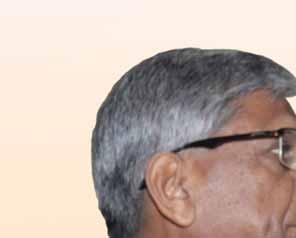
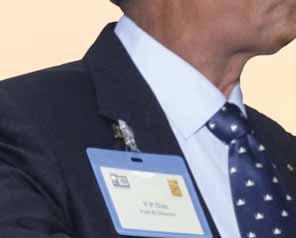
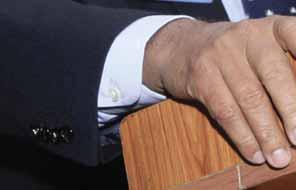

PRID Y P Das, Chairperson of the Rotary India National TB Control Committee

Do you know that each minute one person in India is dying because of TB? And 25 per cent of the global cases of tuberculosis are in India,” asked PRID Y P Das, Chairperson of the Rotary India National TB Control Committee, while addressing a meet in Delhi to focus attention on the scourge of TB in India.
For the last 20 years India had been struggling on how to address this disease. But fortunately, this March, Prime Minister Narendra Modi said that let’s go one step further than the global goal to reduce TB by 90 per cent by 2030. “The PM said the goal for India would be not 2030 but 2025, and all the files gathering dust all these years in government offices have surfaced and TB is now being given priority by the Health Ministry.”
PRID Das reiterated that “our priority remains polio eradication but let us sensitise our Rotarians to do whatever they can on controlling TB. We should know that TB cannot be eradicated; it can only be controlled.”
As always, in this area too, Rotary had struck vital partnerships and signed up with both the International Union against TB and Lung Diseases (The Union); REACH and the Tata Trust. The last was taking up a pilot project in Nagpur in partnership with 14 Rotary clubs for active case mining and if successful, this will be replicated throughout the country.
A celebrity such as Amitabh Bachchan had lent his voice to the campaign against TB. “He himself is a TB survivor, who had TB of the spine and says that if somebody like him, who has access to the best of healthcare, can get TB, imagine the plight of ordinary people.”
A lot of headway can be made in controlling TB if the DGs took this up and motivated their clubs. “Whoever is interested can take up this work. We
are not going to thrust it down your throats. Those interested can send me an email and I will respond to you in five minutes… we can give you a lot of information,” Das added.
Addressing the meet, which was attended by DGs and several other senior Rotary leaders, Neha Singh, a TB champion, recalled her long-drawn battle with the disease. “When I got TB, I was so young and didn’t know what TB was, neither did my family. We didn’t know how to deal with it.”
She was put on a nine-month treatment but even after that she was coughing and losing body weight and so her parents took her to a private doctor, who said she has got TB again. She was again put on a 10-month treatment. “But even that was not successful. I had to go to a special Government TB hospital where the team of doctors said that I have MDR (multidrug-resistant) TB where many TB drugs don’t work.”
After the trauma of two treatments, now she was told she’d have to undergo a two-year treatment. “I simply wasn’t able to accept it; I had to take 15 medicines a day and an injection every day for seven months.” But having survived this ordeal she now realises that people have lots of myths and misconceptions, especially against
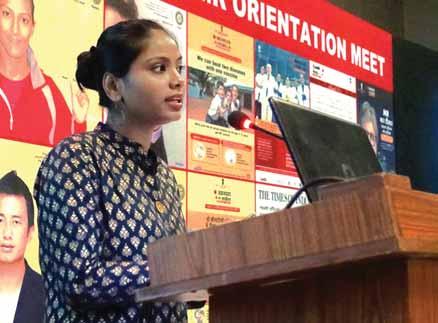
girls…. “that if a girl has TB, don’t sit near her. People started avoiding my family and nobody even asked if I was getting better. For several other diseases, people get what is called social support. But I didn’t get it.”
Stressing the importance of early and accurate diagnosis, she said that had she been diagnosed with MDR TB for the first time, instead of the third, she would have been cured much earlier and saved a lot of trauma. She appealed to the Rotarians to help this cause.
Added Das, “Government treatment is 100 per cent free for TB. There is no dearth of money with the government; it just needs the right partners and we Rotarians can do it.”
Similarly, Rotary’s help in fighting the “biggest infectious killer” was required; “we lose almost 45,000 people to TB every year. We are one-sixth of the world’s population but have one-fourth of its TB cases. There are some mathematical models which say that if we do not act now, by 2050 we will lose $1.6 trillion to this disease.”
Amitabh Bachchan is a TB survivor, who had TB of the spine and says that if somebody like him with access to the best of healthcare, can get TB, imagine the plight of ordinary people.
PRID Y P Das
Addressing the meet, Dr Imran Syed, Country Director, Challenge TB, The Union, said TB is caused by a bacteria, unlike polio, measles etc that are caused by a virus. It affects almost all parts of the body and the main symptoms are fever, cough for over two weeks, weight loss and night sweats. He said that having worked in polio in 2007–08 in Moradabad, he knew how hard Rotary worked to motivate people to allow polio vaccination.
Once a person contracts TB, he has to take treatment for six months; and 24 months if it is MDR TB. A person with TB and no medical insurance gets into a vicious cycle of malnutrition and poverty. First there is no energy to work, then there is no work, and hence no money to feed themselves and their families. “We say India has done a lot for TB… but all we’ve managed to do in the last one decade is to push TB from the fifth biggest killer to the sixth biggest killer.” The worst part is that the age group most affected (15 to 35 years) is the most productive age group, he added.
On how Rotarians can help, he said that yes government funds are available along with the policy for access to free diagnosis and treatment but when it comes to needy people getting those services there is a lacuna and
we haven’t even managed to reach 30 per cent of the coverage needed. So, work was required at the grassroots level to give people access to these facilities when and where needed.
“Also important is awareness; TB is not a problem of only the poor; if you drive in an AC car, your driver coming from a slum can give you TB, or your maid can do the same. You are not safe till the time anybody around you has TB as you can contract it.”
On how Rotarians can help, he said clubs can take up this cause and each club can identify three or four patients with MDR TB and give the entire family nutritional support. “A mother with TB will not eat till her children have eaten. So, we have to adopt the ‘feed the family first’ concept,” Dr Syed said adding that since Rotarians did a lot of health camps, they could conduct camps specialising on TB detection and treatment.
Doing good with TRF help
Team Rotary News
Sharanya is a hospice in Shivamogga (Shimoga) that houses terminally ill patients and offers palliative care for them. RC Shimoga, D 3182, recently equipped the hospice with several infrastructure facilities covering dormitory alterations, ward furniture, recreational facilities, clinical equipment, drinking water, ambulance, an electric generator and solar lights. The club implemented this project, worth Rs 2.6 million, in partnership with RC West
We say India has done a lot for TB… but all we’ve managed to do in the last one decade is to push
the sixth biggest killer.
Dr Imran Syed Country Director, Challenge
TB
Making a presentation on active case finding, Dr Hisamuddin Papa, Co-chairman - Implementation (South), Rotary India TB Control Programme, said doctors should “understand that when a patient comes to us, he does so after suffering from it for quite some time, often having been treated by quacks and others and only after that he ends up at the government hospital.”
Defining ‘early case finding’ he said this was detecting early from the general population TB cases… “the 40 per cent who are infected but do not suffer from the disease. Then there are those who are suffering from TB, but are not infectious, but can become so at a later stage.”
He added that in 2004 in the then RI District 3230 “we had made a TB van with a computerised mobile unit and covered 55,000 high-risk population in many slums and villages, and these included police persons, beedi workers, prisoners, factory workers, etc.” Those diagnosed with lesions were referred to TB clinics for further investigation.
Last year, with a global grant, a bigger and better equipped vehicle was pressed into service, and the work continued.
Pictures by Rasheeda Bhagat
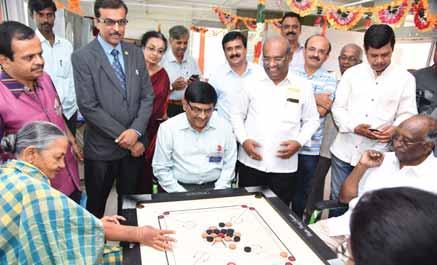
IPDG G N Prakash playing a game of carrom with an inmate at the hospice.
Springfield, D 7890, Massachusetts, and TRF, under a global grant.
This is the only hospice that caters to terminally ill patients in and around Shimoga. “They may not be curable but they still need a lot of care, medication and nursing to ease
their suffering and we thought that providing better facilities and comfort is one way of easing their pain,” said PDG Dr Narayan Pandeshwar, adding that the hospice has looked after over 3,000 patients since 2004 when it was begun.

ince its inception in 1905, Rotary has been a champion for peace. The 1914 Rotary Convention adopted a resolution that our organisation “lend its influence to the maintenance of peace among nations of the world.” Then, the 1921 convention incorporated into Rotary’s Constitution the goal to aid in the advancement of international peace and goodwill through fellowship in the Rotary ideal of service. In 1945, Rotary played a key role in forming the United Nations when almost 50 Rotarians served as delegates, advisers, or consultants at the UN charter conference in San Francisco.
Today, one of our six areas of focus is promoting peace. Every Rotary service project, whether funded with a district grant or a global grant, has an impact on peace. It could be a peace project, a water and sanitation project, a basic education and literacy project, an economic and community development project, or a project in one of our human health-related areas — maternal and child health or disease prevention and
treatment. It really doesn’t matter. The ultimate outcome makes a positive contribution to our world by improving the quality of life for those affected, and that improvement is an element of peace.
Additionally, each year we select up to 100 professionals from around the world to be Rotary Peace Fellows who receive fellowships to study at one of our six peace centres, earning either a master’s degree or a professional
such as human rights, international politics, public health, and development. To date, 1,100-plus people have participated in the programme and we are beginning to see positive results.
As we look to the future, The Rotary Foundation Trustees are discussing how we can improve this programme as well as all of our peace efforts so that we can achieve the maximum possible positive impact. If you would like to help, you can contribute to the Rotary Peace Centers Major Gifts Initiative and help support the next generation of peacebuilders.
Ron D Burton Foundation Trustee Chair
Stefan Meuser

Hamburg’s role as Germany’s premier seaport has shaped the character of the city through the centuries. From its earliest days as Hammaburg — an eighth century fortress in a river bend, built to secure trade in the region — Hamburg has maintained its independence as a city-state still known as the “Free and Hanseatic City of Hamburg.” Today, its citizens proudly call themselves “Hanseaten.”
In its medieval glory days, the city established itself as “gateway to the world” — which is its official slogan. In the 19th and 20th centuries, it was the port of departure for 5 million emigrants, whose stories are documented in the BallinStadt Emigration Museum. The maritime history of the city comes alive in the International Maritime Museum Hamburg.
Today, Hamburg is one of the busiest ports in Europe, moving 136 million tons of seaborne cargo in 2017. The city is also a popular destination for cruise ships, and the port is something of a tourist attraction, where you can get a drink or a meal on a converted cargo ship and even stop in at a church on a riverboat. Or see the harbour on one of the numerous boat tours that are available. Hamburg defines itself in the context of globalisation: a modern, multicultural hub for business, culture and technology that is playing a central role in an interconnected world.
Register for the 2019 Rotary Convention in Hamburg at www.riconvention.org.
Coming as it did after the very serious twoday meet packed with sessions on polio, measles, rubella and tuberculosis, the mood had to be lightened several notches for the youngsters who had assembled for a Rotaract conclave in Delhi, attended by the DRRs and DRCCs (District Rotaract Committee Chairs). And RI Director C Basker did just that by commenting that as the action had shifted from the
senior Rotarians to a young group, “Let’s all relax and have a fun day.”
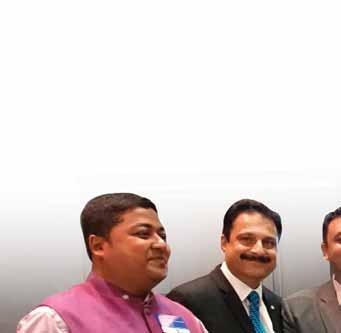
Saying that he was a firm disbeliever in the adage ‘one size fits all’, Basker first sought views from the assembled youngsters on why they had all been invited for such a meet.
Some of the answers:
• To share ideas
• To improve coordination between Rotarians and Rotaractors
• Better networking
• To inspire each other
• Rotary has realised it is incomplete without Rotaractors

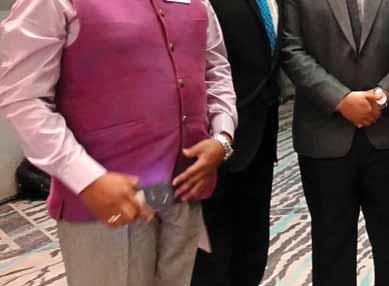

• To build the future of Rotary and make Rotary younger.
While some of this was true, the rest was off the mark, said the RI Director, adding, “we want you to use this opportunity for self-development and self-improvement by partnering with Rotary. Rotaractors are in the age group 18 to 30, and you are here to understand the ongoing programmes



of Rotary and how you need to strengthen the Rotaract movement in your district and ensure more youngsters join your group for their own self-development, networking and to pick up leadership skills.”
He urged them to utilise the great opportunity they had to rub shoulders with the district governors who were present at the meet. Basker said that last year when he had assumed charge as director, he represented three zones (from 12 countries) of the 34 zones that RI has. “I found there was not much cooperation between Rotarians and Rotaractors for many reasons. Maybe the DG was not spending enough time with his DRR. Or the DRR was not that enthusiastic to reach out to Rotarians. So we decided to bring in a synergy between Rotarians and Rotaractors and let me assure you


that this was well before RI President Barry Rassin told us to do it.”
If such a synergy could be established, “India can be showcased as a country of youngsters who have a direction for economic development, build visionary leaders and look at humanitarian services in our communities.”
So last year he had organised a training event that involved regional leaders, DRCCs, DRRs and DGs. Following its success, a similar meeting was being organised this year too in Delhi.
Basker said that considering the estimated 257,577 Rotaractors in the world of which only 145,861 were reported, India could take pride in the fact that we had 45,041 Rotaractors. “So with one-third of the Rotaract population in the world, we will have to devise a strategy on how India is going to be a leader in this area.”
Giving another statistic, he said that of the 35,000-odd Rotary clubs in the world, only 10,182 clubs had ever sponsored a Rotaract club. Turning his attention to the DGs in the hall, the RI Director said, “please find the clubs in your district which have never sponsored a Rotaract club and encourage them to sponsor one this year.”
Basker disclosed that when it comes to Rotaract, RI gives two figures — reported numbers (145,861) and estimated numbers (257,577) of Rotaractors. While the reported numbers are those that the clubs are reporting, the estimated numbers worldwide are only a guess. “In India we have a reported number of only 60 per cent. This was discussed at the last meet in Hyderabad. The DRRs will have to talk to the Rotaract clubs and get the current membership updated in the
database. In 2016–17, the reported Rotaractors were only 25,000 in India, but the number has gone up to 45,000 in 2017–18. That shows that the DRRs of 17–18 have done some good work. Let us appreciate them.”
But, he added, even this figure might not represent the true number. “Joseph Thomas, Senior Coordinator, Club and District Support, in the RI South Asia Office, says probably we have captured only 60 to 70 per cent of the membership. We need to now capture nothing less than 100 per cent this year. That is the challenge. If we can do that… the advantages and benefits we can give your members through connectivity via a single platform will be tremendous. Through a single click any communication or great project you do can be flashed across India.”
He added that today, because we don’t have a proper database of Rotaractors we are not able to inspire them or show them the value proposition… “they can make friends, get trained to become leaders, get job and business opportunities.”
Striking a personal note, the RI Director said that he joined Rotary because somebody invited him, and “after that I learned so many new things, got opportunities to travel. I have gained much more from Rotary than what I have given it. That is the truth… also get out of your mind that we are strengthening Rotaract to benefit Rotary. That is not true.”
Elaborating, he said India was a country with the largest youth population in the world; of our 1.3 billion people, 30 per cent of the population was below 25. “How are we going to equip them with skills and make them capable of finding jobs and become competitive in the world? So let’s

think it as a service to our community, our country by providing an opportunity to others for skill development and personal improvement. Please remove the idea from your head that Rotaract membership is to strengthen Rotary. Rather it is to build our nation by developing our youth.”
He sought from the DRRs a onepage concept paper after the event on what they were planning to do during their year — 2018–19. But “aspire for
No of Rotaract clubs in the world - 7,942
No of Rotaract clubs In India - 2,824
Number of Rotaractors in the world - 257,577 (estimated)
Reported Rotaractors in the world - 145,861
Number of Rotaractors in India - 45,041
something big, and turn something impossible into possible. Just as Steve Jobs did, moving swiftly from pressing buttons and large models to touchscreen, sleek ones. He said he did that because ‘I understood the requirement of a common man’. And he also said that he loves what he does. So whether it is the Rotaract movement or your career, start to love what you do and you will excel.”
PRIP Rajendra K Saboo recalled that in RI his first assignment was as member of the youth activities committee. “In the course of my journey in Rotary I have been so closely involved in the Rotaract movement that I can speak at least for one hour on how the whole training programme has developed over the years and come to this stage.”
He said Rotaractors were already a part of the Rotary family and “they just have to automatically come into Rotary with a sense of commitment and belonging.” Addressing the
assembled DRRs, the two Rotary Coordinators Rajendra Rai and Ashok Gupta underlined the urgent need to infuse more youngsters into Rotary.
Said Rai, “We want to encourage DRRs to work with both the district governors as well as the DRCCs. Once upon a time the DRCCs were just namesake appointees but all that has changed now.” He added that RI President Barry Rassin has given a call to strengthen the Rotaract movement and ensure smooth transition from Rotaract to Rotary. “A reason we are here together today is that if we work in tandem and become a single force we will have more impact in our communities.”
He urged the senior Rotarians present in the room to invite Rotaractors to join Rotary at every opportunity and keep in mind that in 2016 RI had allowed Rotaractors to become Rotarians while still in Rotaract (relaxing the joining age to 29).
Gupta urged DRRs to turn their energy and focus on the WinS programme as it had the potential to bring a huge behavioural change in our communities.
Pictures by Rasheeda Bhagat
Sandhya Rao
Sheela Nambiar’s book isn’t the last word on the subject; some of the things she says or doesn’t say leave room for healthy discussion. But it is a reasonably comprehensive exploration of why fitness matters, and how the lack of it impacts us. She takes the trouble and the time to explore various facets and factors that go to making up good health, and that’s where this book is different.
As a practioner of lifestyle medicine who is also an active obstetrician and gynaecologist, Sheela Nambiar knows women, she knows their bodies. She has the science and the psychology. That’s why the tagline, For a Healthier, Happier, Stronger You, is the key to understanding why she’s not talking merely about strengthening muscle or shedding fat or even building stamina: she addresses body, mind and soul.
Do you hold on to the banisters as you walk up the stairs, she asks. Can you bend down to pick up something and not end up with a catch in your back? Sheela builds a sound case for trying to be in good physical shape as you get older through simple logic, basic questions and solid answers. She helps you make an honest assessment
We lead largely sedentary lives. So, keep moving, says the author. That’s sensible advice. But it’s when she tackles stress that she shines.
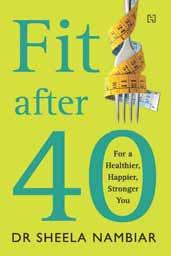
Fit After 40: For a Healthier, Happier, Stronger You by Dr Sheela Nambiar Hachette, 2018pp 335, `399
of your physical fitness level and clearly explains the medical reasons for the changes in your body — the only thing that’s hard to negotiate is the very light printing of the text. She takes you through the various ways we gain weight, and why weight training is as important as working on flexibility and balance, among other things, and emphasises how it is never too late to launch into a workable fitness routine. But she’s not talking only about the physical body. Wellbeing, as she lays out, also takes into consideration an individual’s psychological, emotional and social health, being in tune with the environment, engaging with others, dealing with stress, and thus ageing gracefully. It’s about quality of life. Basically, it’s a self-help book
without the sentiment but with ideas. In other words, ‘fitness’ isn’t about ‘fatness’; it is about being sensible. Who can argue when she says, “Never shop when you are hungry. You tend to make bad choices.” Or when she says, “I am sometimes horrified when someone tells me they have no idea how to cook and, more importantly, doesn’t have a basic understanding of food. You are quite literally delegating the responsibility of your health to someone else…”
She touches upon various aspects of life that are close to our hearts, among them menopause, that awful creature, and offers definite ways of dealing with it. Her best piece of advice is to “find the humour”. She examines various reasons why people eat more than they need to, including social pressure. One of them, she points out and it’s so true, is the buffet. These days, wedding feasts are mostly buffets. Haven’t you seen how people pig out? “It’s a recipe for an overeating disaster,” Sheela cautions. However, I have to point out that the sketches showing stretches and other exercises are not very clear.
We lead largely sedentary lives. So, keep moving, says the author. That’s sensible advice. However, I wonder what all this constant motion will do to the stillness we strive for inside. But it’s when she tackles stress that she shines and I would recommend this book for how she deals with this issue alone.
Fit After 40 is a practical and easyto-read guidebook that provides a holistic perspective on life. You may not go along with everything she suggests, or even be in a position to do so, but you will certainly be inspired to make some effort towards a healthier lifestyle. You will also get up close and personal with characters such as cortisol, deep glute stretch, brain-derived neurotrophic factor and phasic muscles and actually understand who they are!
Sheela Nambiar is a fitness columnist for Rotary News
Jaishree
From gender equity to Rotary’s focus on building resilience in communities for sustainable development, New Zealand’s former Prime Minister Helen Clark engaged the delegates at the RI Convention in Toronto as she shared her views with RI President Ian Riseley. Excerpts from the conversation:
were 100 MPs of which only eight were women. What was that like?
Excerpts from the conversation:
Riseley: You came to politics at a time when women in politics were an exception because when you were elected to Parliament in 1991, there

the elections before. So started
But not much was of us, as very few women have been Members of Parliament. This the fact New
Helen: It was worse than that. There were 92 MPs and eight were women; that was less than 10 per cent. So we were considered a lonely little group. And that was twice the number from the elections before. So people started saying that the women were taking over. But really not much was expected of us, as very few women have been Members of Parliament. This despite the fact New Zealand was one of the first countries in the world that fought for women acquiring the right to vote 125 years
ago. But we were considered a little bit of a novelty because Auckland, which is the largest urban centre, had only ever had one woman MP two years before I appeared on the scene. No woman wanted to be a Prime Minister; their aspiration was to be a minister.
With Ian’s permission I have a little story about the very first election cam-
story about the very first election campaign I had. I addressed a local Rotary club in a small town. After my presentation, one of the members present — there was no lady member at that time stood up and said to me: “You know, with the skills that you’ve got, you’ll make a wonderful farmer’s wife.”
RI President (2017–18) Ian Riseley in conversation with former Prime Minister of New Zealand Helen Clark at the RI Convention in Toronto.

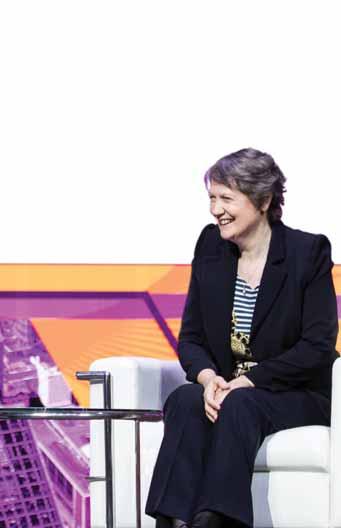

Well Helen, times have changed after that; 40 per cent Rotarians are women in NZ. Now New Zealand has a PM Jacinda Arden who has given birth to a baby. What do you think about Jacinda having a baby as PM? Jacinda is a remarkable young woman elected to be the PM at 37. At that age, I became a Cabinet Minister, a junior one. Times have changed as to what younger women can expect to do in politics. Jacinda is very much her own person and has her own style. She has given birth to a baby. Her partner will stay at home and look after her infant when she goes back to work after six weeks of parental leave. There is lot of significance in this because when I started in politics, it would have been unthinkable. One, that the PM will be a woman; two, that she’ll have a baby; and three, that she would not be married to her partner. So New Zealand really has changed for the better to be a more tolerant and accepting country.
the agenda for sustainable development and what you would like to achieve.
Before the SDG, there was the Millennium Development Goals. Quite a lot of progress was recorded against them on issues such as poverty, hunger, gender equality, education and health. But not so much on environment. The SDG was formulated in 2015 to integrate people, prosperity and planet on the basis that these things are inter-related.
We are not going to resolve poverty and hunger if we continue to degrade our environment. It is challenging. There are a lot of things in the way. We have to re-double our efforts and all the good work that Rotary does in the community. Supporting the disadvantaged and the marginalised to break out of that is going to be an important part of it.

Rotary is like the UN in a few ways. We have had many women leaders, but not that many towards the top. Some people might say does it matter. Tell us why you think that it is important we should not just concentrate on getting the best person for the job but also why we should include women for the top position? Firstly, I would like to quote Hillary Clinton: ‘Gender equality is not just the right thing to do because it is a human right. It is also the smart thing to do because with gender equality, you represent everybody. So, in all our organisations, whether it is Rotary, the UN or Parliament of a country, it has to look like the body that it is represented. That means in the normal course of events, women should be at the top.
You were one of the architects of the UN’s Sustainable Development Goals (SDG). Give us a nutshell version of
For Rotary to focus internationally, support people who are so susceptible to nature’s vagaries.
These goals are incredibly ambitious — no poverty, zero hunger, good health and wellbeing, quality education, gender equality, clean water and sanitation, affordable and clean energy. Are these goals genuinely realistic? They are aspirational but many developed countries can pretty much tick most of those boxes. Most of the societies are above the safety net, below which no one falls into a degrading abject poverty. That has to be the standard — that no one falls below that minimum level.

The most challenging goal for developed countries is on environment. Because the traditional way of developing a country is to first clean up the lighter ones. We have done a lot of damage in the process — like the removal of forests, climate change, greenhouse gas emissions, etc. Our goal has to be to move to sustainable energy for everyone.
Why is gender equality so critical to sustainable development? When women have access to education, the whole family will benefit. Research
Thes no p and gend itatio Are tho abov one f one f T d ev e ment deve up th of da remo green has t for e susta Whe the w
evidence shows that each extra year of education a woman gets, her child will get a better chance of living five years or beyond. So, just in a simple life expectancy of little children, it matters. When a woman has education, her aspirations for her children are higher. If a woman can complete her education, the age of marriage and her first baby will be delayed, which is good for her health. Parameters such as gender equality, equal access to education and health services, to be able to earn in the economy, are very positive for women than for anybody else.
What is the best and most effective thing that Rotarians can do locally and globally as an organisation to bring about a resilient, sustainable and an equitable world?
I look at the issue of food security which is so challenged by what is happening to the climate. Travelling to the dryland countries in Africa, I have heard small farmers say I don’t know when to plant a crop anymore. The rains are unpredictable. If you are a subsistence farmer and the rains don’t come and you have planted your seeds and used up the credit excess that you had, you are in deep trouble. And then, you would not be able to buy food. That is when hunger starts. The year 2016 was the first in the century where the number of ‘hungry’ people went up.
For Rotary to focus internationally, support people who are extremely susceptible to nature’s vagaries. There are initiatives like crop insurance; many
people do not have new methods of irrigation for plants; some communities may have to make a transition from being nomadic to growing crops. At the other end of the scale, there is the flooding and increase in sea level. Part of securing better lives for people in the long-term is to build resilience to adverse events.
You were one of the stand-out candidates in the strong pick for the UN Secretary General’s role. Do you think that your gender had any impact on the result?
I have never asked anyone to vote for me because I am a female. But I don’t think that should be held against me either. And my experience in New Zealand was that if you kept at it, you would eventually crush through every glass ceiling which I think is a great thing about my country. The UN has not made that possible for women as yet. I really hope that the next Secretary General will be a woman and I will be supporting the deserving candidate.
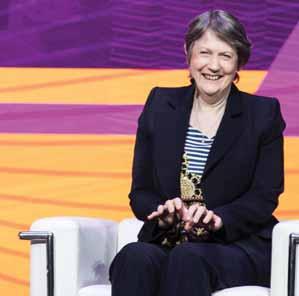


Rotarians S N Srikanth and N K Gopinath of RC Madras, D 3232, were conferred the International Service Award for a Polio-Free World at the Toronto Convention. Srikanth launched the Rotary End Polio Flame during his presidential year in 2014. Gopinath was the Project Chair.
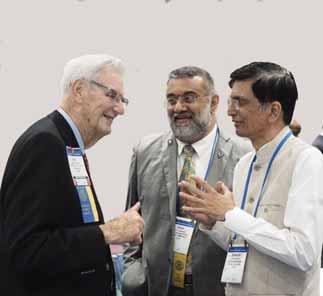

PDG Anil Agarwal, D 3054, received a State recognition for social service from the Chief Minister of Rajasthan Vasundhara Raje Scindhia. He is also an avid blood donor, having donated blood 80 times till date.
Iliked all the activities and that the people here knew what I was going through every day. It was easier to make friends with them because they did not expect me to do things that they knew I can’t do,”
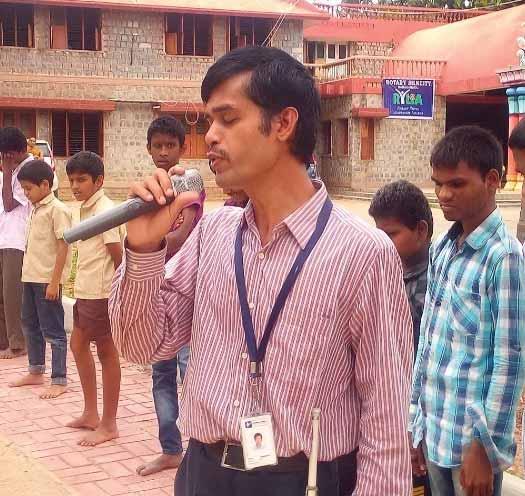
said 12-year-old Girish, a participant, at the RYLA for the visually-impaired, conducted by Rotary Club of Silk City Ramanagara, D 3190.
Talking about the event, Club Secretary T J Anuradha said, “Our goal was to bring them

out of their secured classrooms so they don’t feel lost or out of place when they step outside their campus.” Over 200 visually-impaired students attended this RYLA conducted at the BG School for the Visually Impaired in Ramanagara, near Bengaluru.
The event was inaugurated by the District Superintendent of Police B Ramesh, IPS, in the presence of Club President Raghavendra R and RYLA Chairman R Shashidar.
As the RYLA was conducted on Teachers’ Day, blind instructors from the school were felicitated. Close to 20 Rotarians assisted by
Sandesh, an officer at SBI and an alumnus of the school, and his nine-member team from EnAble India, an NGO that works for the differently-abled, conducted sensory play activities that stimulate the senses: touch, smell, taste, sight and hearing. The participants were given lessons and games to understand the concept of building leadership skills and motivation.
The club’s Youth Service Director Amrithraj Shiva added that “conducting a RYLA for normal students is easier but we wanted to do things differently. Besides, it’s so fulfilling to know that we provided a day full of fun activities for these children.”
RC Bangalore
Whitefield Central, D 3190, under the leadership of Kalpana Srilalitha Prabhakaran, has struck a partnership with a range of corporates over the last year to transform communities around Bengaluru.
The most recent project was the installation of a Water ATM in the club’s adopted village,
UK-based MNC, TESCO, and implemented by a social enterprise Waterlife. The machine costing $60,000 provides clean drinking water for nearly 10,000 villagers.
The automated water dispensing unit works on a prepaid card basis where people can draw 1, 5 or 20 litres of water by swiping a prepaid card. The service is priced at `1.70 for 5 litres 17 for 20 litres.
from the ATM. The water quality is checked through a remote monitoring system and the vendor will maintain the unit for 10 years after which an RCC installed by the club will take over.
Besides, the club has set up a community fund to provide a rainwater harvesting system for the village.
approach to attract corporates to invest in community service projects.
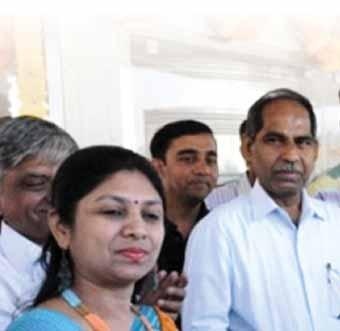
club’s adopt p ed village g , Naga g naya y kana n kote, ab a out t 7 km from the c city Th T e faaci c lity was s totally y fu f nded by y a pr p iced at 1.70 annd d `17 for 0 litrres.
A maximum of 1,000 litres is dispensed in an hour
A m maximum of 1,0 , 00 0 littrees s is dispe p nsed ed in n an hour r

R Ropi p ng g in n c coorpporates K Kalppana haas a w well thoughghtt ou out t annd d syystematic
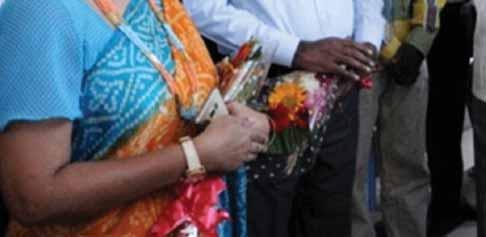
“It does not happen overnight; it takes years to build a rapport with them to gain their confidence and make them understand that Rotary is a dependable partner,” she says. She got in touch with several corporate heads when she was chosen the club’s president-nominee. “By the time I took charge as president, I already had two full years to interact with them.”
dent-nominee. “By the time I took e as I had two ful u l ye yearrs to t
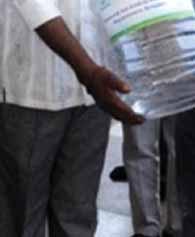

Last October, Kalpana had organised a Corporate Meet which was attended by 100 companies, of which 42 organisations evinced interest in a Rotary-corporate collaboration. She and her team met the CSR managers and recommended Rotary’s five focus areas. “We replaced ‘peace and conflict resolution’ with environment programmes. We divided the companies into groups, assigning a past president for each group to brainstorm and come up with ideas for service projects,” says Kalpana.
Kalpana Srilalitha Prabhakaran (left), past president, RC Bangalore Whitefield Central, D 3190, at the inauguration of the Water ATM.
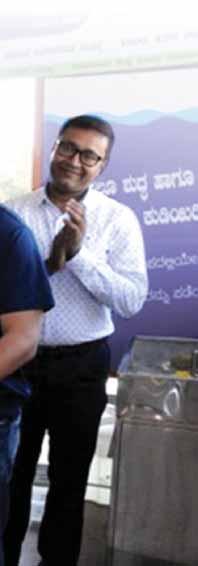
Of the 42 companies, the club struck a deal with, 22 have been earmarked for various projects and these corporates are grouped as product and service oriented. “We have signed project-specific MoUs with these companies. We provide updates about the project every week and share a consolidated report every quarter with them.”
The club has thus constructed a playground in the same village, in association with Mercedes Benz, and Rajamane Telectric has helped it install solar lamps in the village. Plans are on to develop a biodiversity park in Bengaluru, in partnership with TESCO and the BBMP.
The past president shares yet another interesting strategy to refurbish three government schools in the city, of which work has been completed in one school. While TESCO will provide solar panels for the schools, Schneider Electric will support the electrification process and AkzoNobel, a paint manufacturing MNC, will provide the paints for the schools.
“When there are so many players, we will be able to include more schools too, and the corporates will be happy as their expenses are shared,” she says. As for the painting job, Kalpana says that she approached employees in some of the MNCs who were happy to paint
It does not happen overnight; it takes years to build a rapport with corpo-
make them understand that Rotary is a dependable partner.
Kalpana Srilalitha Prabhakaran
the school on weekends. “Multi-nationals such as Adobe, GE etc have an ‘employee engagement programme’ for which credits are given to employees for the work they do during their non-working hours. It is a form of stress-buster for them,” she adds.
The club has thus built a corpus of `8 lakh through such smart moves.
Kalpana was firm in her belief not to give graft or bribes; she had some testing times though. She narrates an occasion where a panchayat official demanded money for signing the permission for a repair work in a school.
“I didn’t want the heading ‘Gifts’ in my accounts. So I tried talking to him about Rotary and our Four-way Test.” While conversing with him she discovered that the official’s son was admitted in a city college and the father was concerned that his son might feel out of place in an urban environment
as he hailed from a rural locality. Kalpana spoke to the college head, “not for extending any favours to this student, but just to see that he settles down comfortably there. Lo behold, this did wonders!
On another occasion, a corporate head wanted a market survey to be done for his product in return for his company’s support for a project. “I put him in touch with a management college where the students could undertake the survey as part of their syllabus.” It proved to be a win-win for both, the college and the company, as the college received more such assignments and the company signed up for campus recruitment and opened internship opportunities for the students.
“I didn’t want my team to spend more than the club dues. All I wanted from them was to extend physical support and coordinate and supervise projects at the sites,” says Kalpana, who is an IT entrepreneur. Her successor this year is also following suit, she adds.

Kiran Zehra
Not having seen any place beyond their city, eight Chennai Corporation school students are on cloud nine after their recent visit to NASA’s Johnson Space Centre in Houston, US, all thanks to the Rotary Club of Madras East (RCME), D 3232’s annual Wings to Fly programme. The club conducts competitions for students and the winners are given an opportunity to visit foreign countries. In the last two years, the winners were taken to Malaysia and Germany as part of the programme. This year, eight students — R Gopinath, T Subhash, I Aadhavan, D Kavyanjali,
G Yogesh, S Prema, Reshma Kumari and S Raj Kumar — won a range of competitions that tapped their scientific skills, and accompanied by Rohini, Assistant Educational Officer from Chennai Corporation, and Rotarians of RCME, visited Houston and San Andreas. “But it feels like we are just back from the moon,” says Reshma Kumari.
These eight students were shortlisted from 4,000 Corporation school participants. “Because of Rotary what seemed impossible till yesterday was right in front of our eyes and all we had to do was work hard to fulfil our dream,” says Subhash.
A team from the National STEM Education Foundation mentored the 30 shortlisted students and for the last round of selection taught them how to present their working models on solutions for day-to-day challenges faced by their community. The camp was not just to train the students execute a project, but to bring about a transformation in their confidence level, body language, communication, presentation, approach to problem-solving and model-building along national, international science fair standards, says N Nagalakshmi, Founder
of the Chennai-based Foundation.
Corporation Commissioner D Karthikeyan, with his “towering persona and booming voice, could instill a sense of trepidation even in grown-ups. When Kavyanjali, a Class VI student, had to field questions from him on her project, I would have been fully empathetic had she faltered or stuttered. But to each question pat came her reply with such confidence that only deep understanding of the subject matter can bring. That was yet another moment that made me truly proud of what this programme had done for these children,” she says.
The eight winners of the Wings to Fly contest with the Assistant Educational Officer Rohini at the NASA campus in the USA.

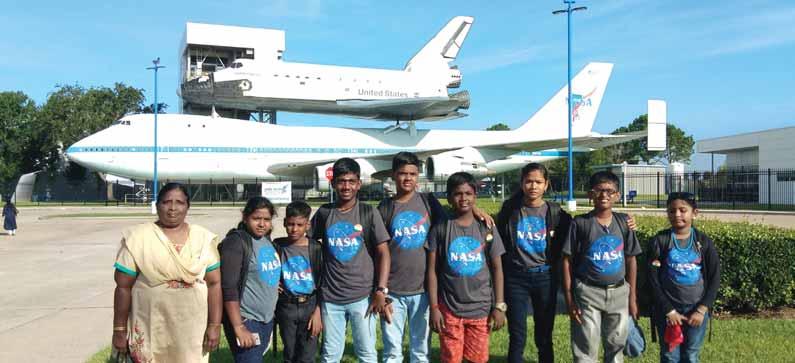


While I was excited and happy to travel to a new country I was also very nervous because I had never gone anywhere outside Chennai.
Reshma Kumari, a student

“When I shared the news of my selection, my neighbours and friends celebrated and my Amma cried. It was something I had never dreamt of,” says Gopinath. The visa process was easy too and all the children cleared their interview round in the first attempt. “While I was excited and happy to travel to a new country I was also very nervous because I had never gone anywhere outside Chennai,” says Reshma.
At Houston, the children were hosted by Revathi Vasudevan, sister-in-law of the past president of RCME, Jayanthi Govindan.
“A great host, she accompanied them on sightseeing trips in Houston and also cooked South Indian meals for them,” says Nagalakshmi. At San Antonio, the young visitors were hosted by Kausi Subramaniam, who is also president of Anuja SA Inc. a nonprofit organisation that promotes the Sister-City


Alliance between the cities, San Antonio, Texas, and Chennai, India.
“All we knew about space, planets and astronauts were lessons from our textbooks. It was beyond my imagination to see right in front of me models of satellites and learn about space stations and how they work,” says Raj Kumar.
For Kavyanjali, interacting with David C Hilmers, a former NASA astronaut, was the most interesting part of the trip.
“When he was a NASA astronaut, he flew on four shuttle flights and has logged over 493 hours in space. He shared with us his experience and how
astronauts were trained for space missions. Now, I dream of becoming an astronaut too.”
The children expressed their admiration for the Sea World, Natural Bridge Caverns, skyscrapers and underground tunnels constructed 20 feet below Houston’s downtown streets that stretch for almost 10 km. “They live in such a different world. I wish India too was as clean and as innovative in architecture like Houston,” says Aadhavan.

At the Baylor College of Medicine, the children were taken to the orthotics and prosthetics lab. “It was fantastic to see students making artificial limbs.
They told us that after the Sri Lankan civil war, their college sent prosthetic limbs to the mine-victims there,” says Raj Kumar.
Most of the students were interested in science and “we wanted to encourage them to dream big and hopefully pursue a career in the subject. That is why the itinerary included visits to science and natural history museums, apart from the space centre,” says VA Ramesh, a member of the project coordinating team. “Our aim was to kindle interest and show these children that anything is possible if they work hard and believe in themselves,” says Nagalakshmi.

V Muthukumaran
Eyeing a drastic behavioural change among students in 11 schools across the National Capital Region, the WinS project being implemented by RC Delhi Ashoka, D 3012, got a major boost with the inauguration of a slew of facilities at the Nigam Pratibha Vidyalaya in Ashok Vihar, Phase-1, by Union Environment-cum-Science and Technology Minister Dr Harsh Vardhan.
As on September, the club has inaugurated WinS facilities in four schools — two each in Noida and
Delhi — and “nearly 75 per cent of work has been completed in rest of the schools. Once thrown open, they will usher in a paradigm shift in hygiene practices by the students,” says Ajay Agarwal, Club President.
At the Nigam Pratibha Vidyalaya, a gender-segregated toilet block was inaugurated, apart from renovating the existing three blocks; providing safe drinking water through RO systems; upgrading furniture such as desks, benches; setting up four group handwashing stations;
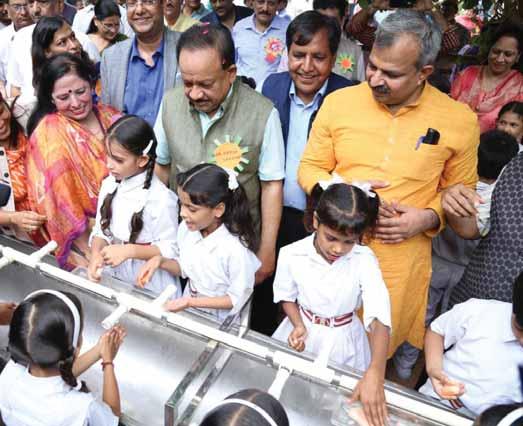
painting hygiene messages on toilet corridors and putting up safety tips, dos and don’ts for healthy living all across the classrooms as suggested by the UNICEF; and certain improvements to school buildings. “Till now we would have spent nearly `30 lakh at the four schools. Work is on in rest of the seven schools at Delhi, Noida and Sonipat (Haryana) through a global grant which will benefit nearly 5,000 students across 11 schools,” explains Agarwal.
With the support of RC Box Hill Central, Australia, D 9810, the club has secured a TRF grant of $108,000 for implementing the project which comes under the ‘Target Challenge Pilot’ of The Rotary Foundation.
Going a step further, the club has roped in the NGO World Vision India to usher in a series of behavioural changes and take up capacity-building activities at the Nigam Pratibha Vidyalaya with the aim to develop this school into a model WASH institute and “thus set as an exemplary precedent in sustainable hygiene practices at the school and community-level,” says PDG Ramesh Aggarwal, Secretary, North Zone, Rotary India WinS, and member, RI WinS Committee (2016–20). A Bal Sansad (child cabinet) was also inaugurated on the occasion.
“Group handwashing shall ensure that children wash their hands in ‘groups’ just before the mid-day meals under the supervision of a teacher, as they face each other, exchange positive messages, make eye-to-eye contact,
sing a jingle on handwashing and enjoy the process,” says Aggarwal.
As powerful agents of behavioural change, children will take the good lessons such as handwashing with soap which they have learned at school back home to teach their parents, siblings and elders, he noted.
Centre will back Rotary In his address, Union Minister Dr Vardhan pointed out that government alone won’t be able to succeed in eradicating diseases and Rotary’s efforts at the school and community-level would definitely ensure better healthcare for students.
Rotary Club of Salem Young Town, D 2982, recently had its installation of new officebearers at Pattaya, near Bangkok. Following a suggestion by Vutikorn Kamalchote, President of RC Jomitien Pattaya, an 18-member team visited Baan Jing Jai, an orphanage in Pattaya, and donated ` 50,000 to its manager for purchase of provisions and other material for the home. Presidents from other local clubs and few past governors of D 3340 were present at the installation ceremony.
The home provides accommodation, food and education for 150 children in
He noted that Rotary India was engaged in over 20,000 schools under WinS to “shape the future of children by not only providing toilets, drinking water and handwashing facilities but also focusing on behavioural change through communication activities and hygiene education.”
Vardhan urged the Rotary clubs in Delhi to take up at least 50 schools for WinS and assured support from the Centre and the Municipal Corporation. WASH Specialist Ram Chandra Singh from UNICEF complimented Rotary for the success of Swachh Vidyalaya programme of the Union HRD Ministry.
Thanking Rotary, school principal Vanita Bajaj said the WinS project would prove to be a “gamechanger in improving the attendance, enrolment, quality of education, reduction in dropout and curbing water-borne diseases.”
After the setting up of WinS facilities at the Purva Madhyamik Vidyalaya in Noida, there has been a spurt in the enrolment of students from 90 to 270 as the parents were attracted by the better sanitation practices at this co-ed school. The WinS inaugural was attended by Union government officials, municipal councillors, UNICEF delegates and a large number of Rotarians.
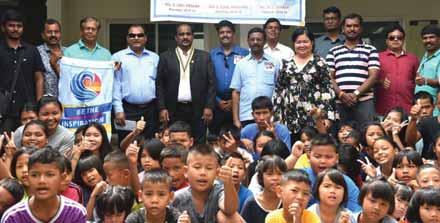
the age group nine months to 18 years. “The manager Khun Pingta wanted our help in providing a toilet block for the orphanage and we have decided to work on it,” said the Club President Hari Baskar.
The orphanage visit is their second foreign project, the first one being delivery of educational aids to students displaced by the ethnic war in Sri Lanka.
A 25-member district team from four clubs led by Charter President C Thyagarajan visited Kilinochchi and Jaffna in the Northern Province of Sri Lanka after the island government
opened the doors to foreign delegates and aid agencies in 2015, following a six-year interregnum after civil war. “With the guidance of local MP Eswarapatham Saravanapavan, we distributed school uniforms and textbooks worth `1 lakh to 300 children. The then DGE R Vasu was also part of the delegation,” recalled Thyagarajan, who is currently the District Chair of Public Image.
The club is now all set to build a toilet block for girls at a higher secondary school in Malliakarai village near Salem this year with the help of global grants, he said.
As the number of polio cases approaches zero, the challenges facing Rotary and its partners in the Global Polio Eradication Initiative are changing. We still need to reach every child with the polio vaccine — and we’re using innovative strategies to do that, in spite of geopolitical uncertainties. But that’s only one part of our job. We’re tackling vaccine-derived poliovirus, which can begin to spread in places where vaccine coverage is low. We’re becoming disease detectives, following up on any shred of evidence that wild poliovirus might still be circulating. And we’re fine-tuning our plan to keep the world free of polio forever. Here’s what you need to know about where we are now.
Polio is an intestinal virus that is spread through contact with the feces of an infected person, which can contaminate water or food. The poliovirus is a single positive strand of RNA enclosed in a protective coating called a capsid.
There are three variations, or serotypes, of the poliovirus. They differ in their outer coatings.
The few cases of wild poliovirus that we see now are all of type 1. The last case of type 2 was in 1999, and the world was certified free of type 2 polio in 2015. The last case of type 3 was in 2012.
The virus infects only humans, mainly children under five because
they are least likely to be fully vaccinated. There is no cure.
1. The virus latches onto a receptor on the surface of a cell, multiplying in the lining of the intestines.
2. It enters the cell and hijacks the cell’s own machinery to make copies of itself.
3. The virus is released to infect neighbouring cells, spreading from the digestive tract to lymph nodes and the bloodstream.
The virus replicates and is excreted through feces, starting the cycle again.
Rotary and its partners worked to reach 430 million children in 39 countries during polio immunisation campaigns in 2017.
Afghanistan, Angola, Benin, Cameroon, Central African Republic , Chad, Côte d’Ivoire, Democratic Republic of Congo, Djibouti , Equatorial Guinea, Ethiopia, Gabon, Guinea, Guinea-Bissau, India, Indonesia, Iraq, Kenya, Laos, Liberia,
Libya, Madagascar, Mali, Mauritania, Mozambique, Myanmar, Nepal, Niger, Nigeria, Pakistan, Republic of the Congo, Sierra Leone, Somalia, South Sudan, Sudan, Syria, Tajikistan, Uganda, Yemen
We’re also fighting vaccine-derived poliovirus.
The Global Polio Eradication Initiative (GPEI) uses the oral polio vaccine in immunisation campaigns. It’s made from strains of the poliovirus that are live, but weakened.
This weakened virus multiplies in a child’s gut, stimulating an immune response in the lining of the intestines. Then the child excretes the vaccinevirus in his or her feces.
That is usually a good thing: Other children are then exposed to the weakened vaccine-virus in the environment. This exposure stimulates their bodies to create the protective antibodies as well. It’s a way to indirectly induce immunity


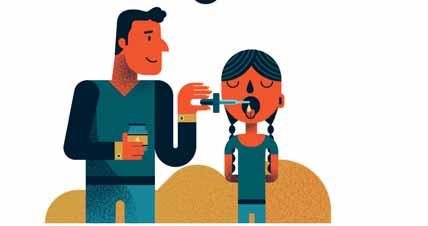
in children who may not have been reached by health workers with doses of the vaccine.
In places with low immunisation rates, the weakened vaccine-virus can begin to circulate. In rare cases, it mutates back into a more virulent strain that can cause paralysis. This is called vaccine-derived poliovirus (VDPV).
In 2016, the year after the world was certified free of type 2 polio, all countries switched from a trivalent vaccine, which immunised against all three strains, to a bivalent vaccine, which immunises only against types 1 and 3.
Since the switch, there have been outbreaks of circulating vaccinederived poliovirus (cVDPV) from the type 2 strain in the Democratic Republic of Congo, Nigeria, Somalia, and Syria. The GPEI has a stockpile of monovalent type 2 vaccine to use to stop these outbreaks.
High immunisation rates are the best protection against both wild and vaccine-derived polioviruses.
Many countries use inactivated polio vaccine, which uses a dead virus, in their routine immunisation systems to avoid the risk of VDPVs. Inactivated polio vaccine protects only the individual who received the vaccine against polio infection
Oral polio vaccine is the only vaccine that can interrupt the person-to-person transmission of wild
poliovirus, which is why it will be used until the world is certified polio-free. Once wild poliovirus types 1 and 3 have been eradicated, only inactivated polio vaccine will be used.
We search out the poliovirus wherever it hides.
Scientists look for evidence of the poliovirus in the environment to learn more about how it is circulating...
Most children infected with the poliovirus don’t show symptoms, but they still excrete the virus in their feces for several weeks.
Workers collect water samples near sewage treatment plants or, in areas without adequate sanitation, other known sources of wastewater such as open canals and streams.
Samples are kept cold during transportation to a lab that is part of the Global Polio Laboratory Network.
Virologists test the samples for poliovirus.
If virologists confirm the presence of a poliovirus, they carry out further tests to determine the exact genetic makeup of the virus and whether it is wild or vaccine-derived.
...and health workers track the children who show symptoms to see if they are caused by the poliovirus.
A child under age 15 experiences sudden, unexplained weakness or paralysis, known as acute flaccid paralysis (AFP). Most cases of paralysis are not caused by polio, but we investigate them to be certain.
A doctor or other community member such as a traditional healer, pharmacist, or cleric reports the case to medical authorities. Samples are kept cold during transportation to a lab that is part of the Global Polio Laboratory Network.
Doctors collect a stool sample within 48 hours of the onset of paralysis, and another one 24 to 48 hours later.
The scientists compare it against reference samples of known polioviruses. Because viruses from different regions have slightly different genetic sequences, the virologists can map where the virus came from — whether it was local or came across a border or from farther away.
Health workers use this information to figure out the best immunisation strategy to prevent further spread.


The scientists who identify the virus work in one of the 146 labs accredited by the World Health Organisation, in 92 countries, that make up the Global Polio Laboratory Network.









SUBNATIONAL AND NATIONAL LABORATORIES
are the frontline facilities that test stool and sewage samples
LABORATORIES
distinguish between wild and vaccine-derived poliovirus and determine the genetic makeup of the virus





GLOBAL SPECIALISED LABORATORIES
determine the genetic makeup of the virus, and prepare and distribute the chemicals used in virus testing
In 30 years, we’ve gone from 125 polio-endemic countries... ...to three
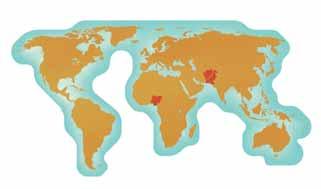
17.4 million

people who are currently healthy would have been paralysed by polio without our eradication efforts since 1988
The Rotary Foundation awarded nearly $700 million in PolioPlus grants from 2010 to 2017. Vaccines are largely covered by other donors, so Rotary provides funds to cover the gaps.
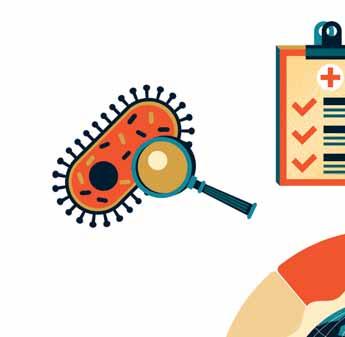
SURVEILLANCE for disease detection, including the Polio Laboratory Network
$72.5 million

OPERATIONAL SUPPORT including stipends for the millions of community-based vaccinators who administer the vaccine and perform house-to-house follow-up visits
$308 million
RESEARCH into new ways to facilitate eradication
$16.6 million

TECHNICAL ASSISTANCE including salaries for health and immunisation professionals such as field officers and cold chain managers
$132 million

SOCIAL MOBILISATION to raise awareness of the vaccination campaigns and the benefits of immunisation
$141.4 million
And we have a plan for keeping the world polio-free forever.

• Detect the last wild poliovirus in an individual or the environment.
• Continue immunisations, surveillance, and responses to outbreaks of vaccinederived poliovirus.
• Begin to transition the resources that the GPEI created to support other health priorities.
• Certify the world polio-free.
• Dissolve the Global Polio Eradication Initiative.
• Reduce the number of laboratories and vaccine-manufacturing facilities that store the poliovirus and ensure stringent safeguards for those that continue to handle the virus.
• Hold high-quality immunisation campaigns to create a firewall of immunity in advance of the withdrawal of the oral polio vaccine.
• Stop using oral polio vaccine concurrently in all countries to eliminate the risk of vaccinederived poliovirus and begin to immunise children using only the inactivated polio vaccine in routine immunisations.
• Continue surveillance; after the world is polio-free, environmental surveillance will be increasingly relied on.
• Respond to outbreaks of vaccinederived poliovirus, which could circulate for several years after ending the use of oral polio vaccine.
Rotary Club of Udhampur, District 3070, set up a retina care centre in the KLSM Rotary Eye and ENT Hospital in Udhampur, Jammu and Kashmir, last year. The facility was inaugurated by RIPN-designate Sushil Gupta in the presence of the then DG Parvinder Jit Singh, Hospital Chairman D N Sharma, Club President Puran Lal Sharma and the district officials. DGE Sunil Nagpal, DGN Davinder Singh and other past governors of the district were also present.
The centre, costing $68,000, was funded through a global grant from TRF, D 6650, USA and D 2770, Japan. Districts 3070 and 3131 also contributed for the cause from their DDF, besides generous contributions from Rotary Clubs of Udhampur and Rajouri.

RIPN-designate Sushil Gupta with IPDG Parvinder Jit Singh and PDG K K Dhir at the inauguration of the retina care centre.
This is the second such centre in the State after a similar one in Srinagar. Earlier people had to travel 500 km to Amritsar for retina care. Hospital Chairman Sharma, also a Rotarian, had assured that treatment will be extended free of
cost for the poor and at a subsidised fee for those who can afford it.
The centre will help treat macular degeneration, diabetic retinopathy and surgical diseases of the retina, macula and vitreous, he said.
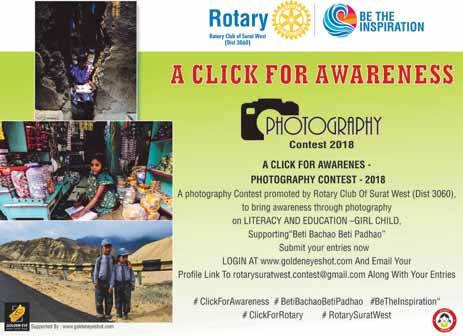
Rotary Club of Surat West, D 3060, announces a national-level photography contest to highlight the education of girl children. Each participant can submit up to five images. Please submit your entries at rotarysuratwest.contest @gmail.com before Nov 20, 2018. For more details contact the Club President Vivek Goel at somiyabong@gmail. com.
District 3240 is a vast area comprising the eight States of the Northeast and the northern part of West Bengal. The district is a striking mix of heterogeneous communities with varied hues of culture. Here, each of the 88 Rotary clubs tailor their own mega projects to define their impression of service through Rotary.
Here are some of the unique projects, implemented by the clubs with the help of global grants, that have touched the lives of people across the region over the years.
Seven Rotary clubs have installed ‘pay and use’ toilets in the seven major
cities of Guwahati, Shillong, Agartala, Imphal, Dimapur, Aizwal and Silchar. This endeavour was the brainchild of PDG Arijit Endow. While travelling across the States with PRIP Kalyan Banerjee and PDG Kalpana Khound, they noticed a severe dearth of public toilets in the region, and thus the project took shape, says Giti Bujarburuah, a member of RC Gauhati South. The toilets were constructed with the financial support of a global grant of $73,650 from The Rotary Foundation and District 5020, the USA.
The clubs have signed MoUs with the local civic bodies and NGOs for the maintenance of the toilets. “All the toilets are clean and well-maintained. Our Rotarians make surprise checks regularly,” says Giti.
The Nalbari district of Assam has severe arsenic contamination in drinking water sources. Arsenic is a serious cause of concern as prolonged consumption of the contaminated water can cripple or even kill a person. So the Rotary
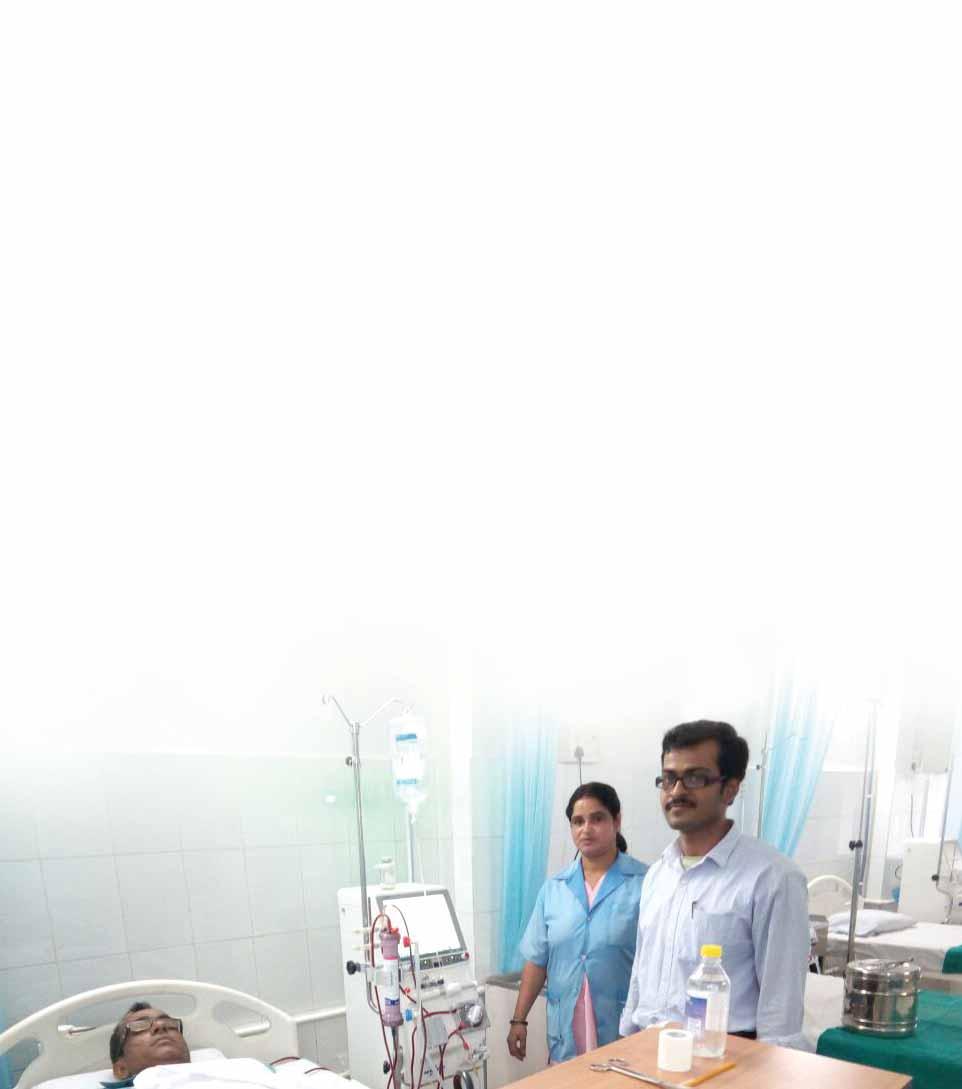

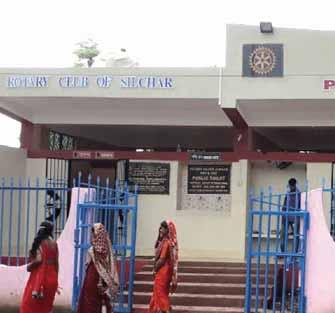


Club of Guwahati South undertook an initiative to purify water by removing arsenic, through specially designed large arsenic-removal plants. “We have installed these plants in 17 schools so that the children can enjoy safe drinking water, free from chemical,” says Giti. The project was implemented through
the terminally-ill and provide palliative care for them. A global grant of $31,156 was supported by TRF and Hsinchu Chu-Chiann Rotary Club of D 3500, Taiwan for the purchase of furniture and medical equipment for the hospice.


a global grant of $69,000 with RC Tacoma, D 5020, US, and TRF.
Hospice for the terminally-ill RC Gauhati West, in association with the Deepshika Foundation, established a hospice at Mirza in the South Kamrup district of Assam to care for

NowThe Rotary Kidney Care Centre established at the Dreamland Nursing Home in Durgapur, West Bengal, by RC Aerocity Durgapur, is a huge boon for the people of the region. The threebed dialysis centre was set up with the help of a global grant of $53,150 with international partners such as RCs Moorpark, Elkhart, Bakersfield East, Bakersfield North, Grover Beach, Pismo Beach (Five Cities), Moorpark Morning, Semi Sunset, Cayucos Seaside, Thousand Oaks, Indian Wells Valley, Newbury Park, Goleta Noontime and the DDF of Districts 5240, 6540, 3240 and TRF.
the visitors and family members at the Matoshree Vruddhashram, an old-age home in Khadavli, Bhiwandi taluk, can have a comfortable stay at the Rotary Rehabilitation and Counselling Centre, thanks to RC Mumbai Ghatkopar, D 3141, which has recently inaugurated this new facility there at a cost of `14.5 lakh.
The centre consists of four fully-furnished rooms on the first floor of the building. “Relatives of the elderly people living at the old-age home can spend time together for a few days. This will give seniors the joy of staying with their own kith and kin. Earlier, the inmates were living in dormitory and there was no place where visitors can sit and talk or stay,” says the Club President Sudha Navandar.
A counsellor has been appointed to advice the visitors and elders staying at the home “in an effort to resolve their differences and motivate the families to reunite,” says Suneel M Puranik, a club member.
Rasheeda Bhagat
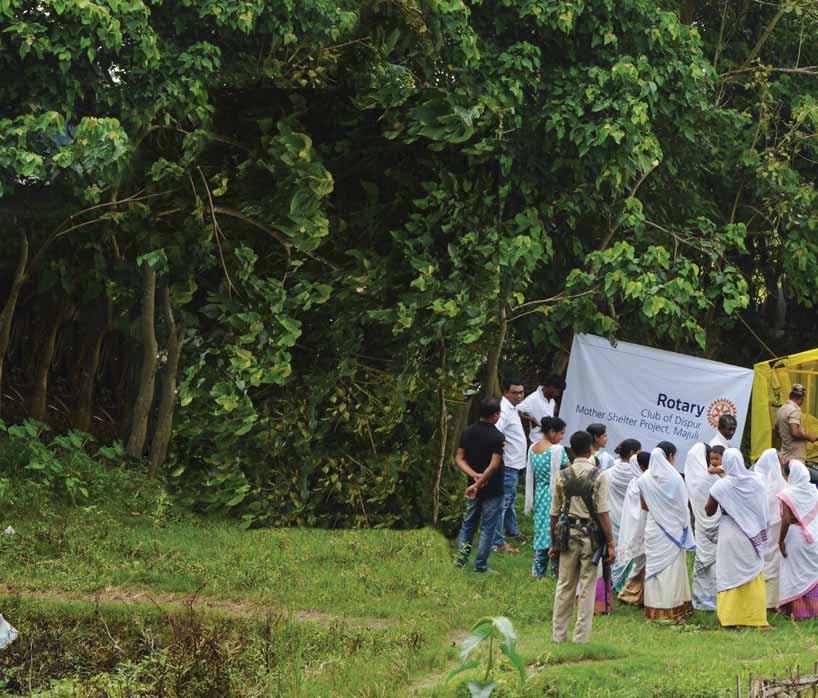

Atiny club with only 21 members in the Northeastern Indian State of Assam — Rotary Club of Dispur, RI District 3240 — has provided an excellent example of how focus, dedication and smart partnerships with corporates, in this case headed by its own members, can provide innovative solutions to the problems caused by regions prone to natural disasters. And, dramatically transform lives in the community.
This project was done to serve Majuli, a river island about 340 km east of Guwahati, and situated in the Brahmaputra River. This is the biggest river island in the world, being home to some 20-odd Vaishnavite Sattras (monasteries) where spiritualism and culture are celebrated. It is also a celebrated tourism spot. In 2016, this island with a population of over 167,300 people became the first island in India to be made a district.
According to Rtn Sundar Bordoloi, President of the club (2017–18), over
the years, due to severe erosion, the island is rapidly losing its land mass and has almost become half its size. But the biggest problem for its inhabitants is that it is plagued by at least four to five spates of devastating floods every year and when this happens it cause unimaginable misery to its inhabitants.
“The floods force thousands of people to run out of their homes and take shelter on a high land mass or elevated roads such as a national highway. Along with people, livestock and

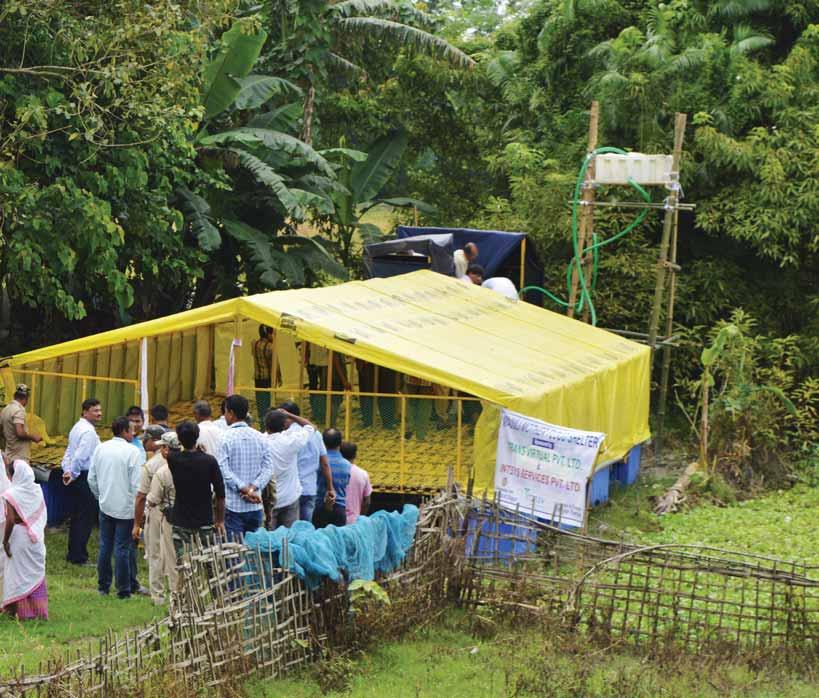
other animals are also badly affected,” he says.
Living in the island becomes virtually impossible when the river floods with virtually everything going underwater. “Drinking water and clean water for washing and other chores becomes an absolute scarcity. The schools remain closed and women suffer the most as they are the main caregivers,” says Bordoloi.

So when the noted writer and innovator Sanjib Sabhapandit spoke to him about gifting this community a floating
shelter that contained all the vital facilities and could be home to some 50-odd people, he was really excited.
The concept of the design that Sabhapandit shared with him was a floating shelter made from locally available material such as bamboo, wood, steel and plastic. “He had conceived the design in such a way that the model of the shelter was totally
flexible so that people could easily improvise upon it using traditional wisdom, local materials and expertise, and when he explained the details I was totally convinced,” says Bordoloi. The shelter they discussed could accommodate up to 50 people and would come equipped with a hygienic toilet, hand pump for water and an overhead tank for water storage.
“Sabhapandit explained that though the product is technical in nature, it is holistic in approach and humane in character. All components can be

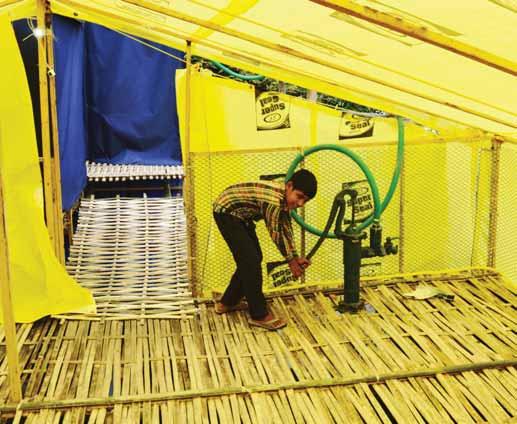

detached for ease of transport and storage, and when there was need it could be quickly assembled. And, if properly handled and maintained, the life of this product is estimated to be 25 years.”
Hooked to the idea, Bordoloi approached two Rotarians from his own club, Biswajit Hazarika and Utpal
The shelter is made from locally available material such as bamboo, wood, steel and plastic. The design is totally using traditional wisdom, local
Kumar Hazarika and they readily agreed to sponsor the floating shelter costing around ` 5 lakh from their respective Guwahati-based companies — Transvirtual and Intsys Services.
And thus the project christened ‘Mother Shelter’ was born and the floating barge was made using PVC or HDPE tanks/crates, fitted in a steel frame covered by bamboo platforms and the structure completed with a sturdy and durable plastic sheet as roofing.
Bordoloi says the size of such a barge can be increased by a unit of 8 ft and its multiples and can be made large enough to accommodate 100–200 people, if the available space permits it. The design encompasses storage space for water, food, valuables, important
land and academic documents. “The bathroom and latrines have been made using a steel frame and canvas cloth. The commodes are made of stainless steel and are portable. The septic tank has been specially designed for flood-time use above the water level, though it can be used at other times as well. This septic tank is reusable. The washing and flushing are by way of pressurised water dispensed through a spray nozzle,” he explains.
The shelter is complete with a solar-powered LED lighting system with a battery backup and it can light up to five LED bulbs. It also contains, for children and adults, a study table made with sun mica plyboard fitted on a collapsible steel frame. Shelves are also provided for keeping books and other study material. A sturdy cooking platform is included in the design.
A 400-litre water tank is provided on top of a 20 ft bamboo platform and through a hand pump water is available to the occupants. In this totally environment-friendly contraption, the

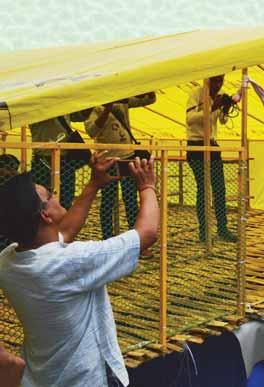

innovator Sabhapandit has made a provision for rainwater harvesting too. The flow of the rainwater falling on the plastic-sheeted roof of the barge is directed through ducts into the storage tank.
Bordoloi adds that this shelter was awarded the Best Innovation Award at this year’s National Science Day exhibition organised by the Institute of Advanced Studies in Science and Technology, under the Department of Science and Technology, Government of India.
He adds that Senior Director General of Police (SB), Assam, Pallab Bhattacharya, extended all help from inception to the commissioning of the ‘Mother Shelter’ in Majuli.
Deba Prasad Mishra, Deputy Commissioner of Majuli district, Superintendent of Police and other district officials and Rotarians from RC Dispur attended the event held in June.
Addressing the gathering, Biswajit Hazarika, Managing Director of Trans Virtual, said, “If each one of us takes up some social responsibility, we can address many problems of the State.” Managing Director of Intsys Services
Utpal Kumar Hazarika said, “It may not always be possible for an individual



to take up major responsibilities, that’s why teaming up and collaboration make things doable, provided we have both compassion and commitment.”
Says IPDG Sunil Saraf, “This small club, the smallest in our



Majuli district Deputy Commissioner Deba Prasad Mishra inaugurating the Mother Shelter.

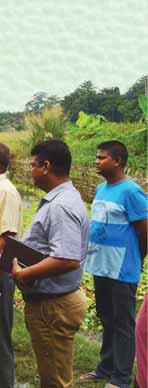
district, deserves total appreciation for coming out with such an innovative project that will effectively serve a crucial need of the community.” At the well-attended meet held on June 26, the shelter was officially handed over to the NGO Bohniman Majuli Krishi Samabay Samiti that operates in the Molapindha village of the river island.

Asked if this project can be replicated by other clubs in areas prone to flooding, Bordoloi says, “Of course; it can be designed and fabricated anywhere using local material and is easy to transport too.”
Asked how many more such floating shelters does a State like Assam need, his cryptic reply is “An unlimited number”!
So has his club’s iconic floating shelter been put to use already? “Not yet, but knowing how prone this river island is to floods, it can be required any day,” he adds.
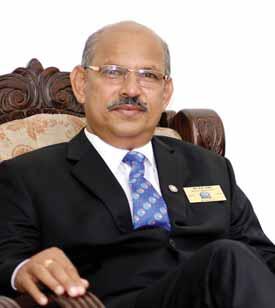
E K Luke Financial Services, RC Vaikom,
He is busy coordinating with the district team for relief and rehabilitation of those affected in the Kerala floods. “I am very happy to be in Rotary during times like this. It is a blessing to be of help to people who have suffered so much and lost everything in the floods,” says E K Luke.
A Rotarian from 1984, “I was then under the impression that Rotary is for the elite. But gradually I understood the huge work Rotarians do and I too got involved.” His memorable moment in Rotary is when he organised the PETS in Malaysia, the district’s first ever overseas programme. Rotary has changed over the years, he says. Earlier the focus was only on club service. “Only now we emphasise on membership, as service can be done only through members. Now the district membership is around 4,400, and we will increase it to 5,000 by the year-end.” The district now has 267 women Rotarians. Luke is actively promoting spouse membership and wants to install five new clubs, four of which will be in Kaduturuthy, Mundakeyam, Kumarakom and Kuttanad where Rotary is still unrepresented.
He is keen on getting 100 per cent contribution to TRF from members. “I am insisting that every member give at least $10. Last year only 17 per cent members contributed.” But for now, TRF and membership have taken a backseat as the entire district is engaged in flood relief and rehabilitation activities.
He is passionate about the district project, Snehaveedu, which aims to construct 300 new houses and complete the building of 700 incomplete houses across the district. “Clubs are identifying the beneficiaries for this programme. The construction cost ranges from `30,000 to 3.5 lakh. We have completed 118 houses so far.” “My focus at the beginning of the year was annadhanam — providing food for the hungry. Then I realised that shelter makes a lasting impact on people’s lives. So I shifted focus, but with the floods, all my dreams — roti, kapda aur makan — are being realised.”
Just a million’ is his tagline, and his plans include a million trees, a million litres of safe drinking water, a million meals for the needy, a million smiles, a million ounces of blood and a million dollars for The Rotary Foundation. Pathy has his blueprint ready for his team. “That way the clubs can start a project right away. I did this homework a year ago.”
He has soaked up Rotary from a very young age as his father Ramasubramanian is a member of RC Ootacamund. His mother Vimala Mani is a past president of the Inner Wheel Club of Ootacamund. A Rotarian since 2000, he has “fond memories as an Annet, and as a Rotaractor I was in charge of organising district events.”
He was a fun-loving Rotarian, and more into nextgen activities such as organising fun programmes, DJing and track events, till a young couple from a rural neighbourhood approached him for treating their child’s heart ailment, after learning about the club’s Heart2Heart project. He had mentioned it in passing in a radio programme his club had hosted. “I was so overwhelmed that I took the initiative to have the child treated at the GKNM Hospital. The doctors said that
she was critical and may not survive beyond a week. I approached friends, relatives and pooled in ` 60,000. The doctors too did their bit and by God’s grace, Jennifer was cured. Today she is 19, hale and healthy.” This incident transformed him into a hardcore Rotarian.
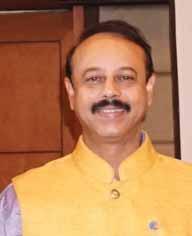
Pathy is hoping to woo Rotaractors into Rotary through membership in what he calls ‘Space Clubs’.
“These clubs will be a bridge for Rotaractors until they find their feet and are able to afford the demands of being a Rotarian. The aim is to make the transition easy when they eventually join Rotary.”
On membership, he will add new clubs only if the strength is more than 25 and every one of them are green Rotarians. “Three new clubs have been installed and they are successful because the members have original ideas and there is no beaten path. Secondly, everybody is an equal there.”
His other passion is to build two special parks — in Coimbatore and Cochin — for differently-abled children.
Pathy’s wife Veena is the Chairman of Inner Wheel District 320.
E K Ummer, Doctor, RC Nilambur, D 3202
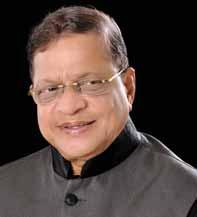
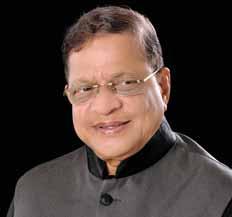
He was the charter president of his club and is keen on increasing the district membership by 10 per cent from the present 5,000 Rotarians. Ummer is confident of raising $500,000 for TRF. He is happy that the Rotarians of his district rose up to the occasion during the Kerala floods and raised around `3 crore-worth relief material for the affected people. Most of the places in the district were also affected by the floods.
He is the chairman of a school for the hearing and speech-impaired in
Nilambur and is keen on establishing an early detection centre so that deformities may be corrected at an early age.
“As a doctor, I always feel that people should take care of their health and take necessary precautions. Children are vulnerable and they should be given utmost care and prompt treatment,” he says.
Ummer is the State President of the Indian Medical Association. His spouse Kamarunnisa is a Major Donor and a member of the same club.
Vinay Bhatia
ARotaractor-turned-Rotarian since 1993, Vinay Bhatia cherishes the “amazing RYLA” he participated in Dalhousie as a Rotaractor. He also treasures a visit to Brazil on a Friendship Exchange programme. “The warmth and love the host Rotarians showered really awed me and after that I have been part of four such exchange programmes. Each one was an incredible experience,” he says.
He has always been enthusiastic about organising medical camps. “It is a fulfilling experience to be able to help people who suffer silently with various ailments, yet do not have the means to get proper treatment.” He is excited to be signing an MoU with the GoI and the Orthopaedic Association of India for setting up a national-level helpline to address clubfoot deformity. This will help people identify orthopaedists in their locality
who will treat clubfoot deformity in children.
His plans for the district include construction of check dams, a dialysis centre and adding two mammography vans with the help of global grants.

Bhatia wants to increase his membership by 15 per cent and add one more all-women’s Rotary club to the existing two in the district. “Women Rotarians are very enterprising here. We have ten women presidents,” he says.
He is confident of raising a substantial contribution for TRF. The Million Dollar Dinner, organised recently with TRF Trustee Gulam Guhanvaty, was a huge hit, he says. “It got us a commitment of $2.5 million.”
C R Chandrabob, Chartered Accountant, RC Ranipet, D 3231
He too hails from a family of Rotarians; his father is the charter president of RC Ranipet; his mother is the past chairman of Inner Wheel District 323; spouse Sujatha, past president of the Rotary E-club; children, brother and his extended family are also Rotarians; while his sister is an Inner Wheel member.
Chandrabob became a Rotarian in 1989, after being an Interactor and Rotaractor.
He is focused on strengthening the clubs of his two-yearold district which was bifurcated from D 3230. “The district spreads across Vellore, Kanchipuram, Tiruvannamalai and Tiruvallur. We are in the nascent stage and I want to sustain the interest in the Rotarians. So I am involving all the clubs in some major activity,” he says. All the clubs are adopting a village each and concentrating their activities in a wholesome development of the village.
A hardcore Rotarian, Chandrabob is motivating families of Rotarians too to become members. “My theme is — Enjoy Rotary with family. I am involving the Anns and Annets in various activities. I have experienced first-hand what it is to be in a family of Rotarians.”
On membership, he is aiming at a 20 per cent growth and wants to increase women membership too. “My wife
Sujatha is helping me by involving women Rotarians in various projects. We have conceived a programme called ‘Magalir Mattum’, exclusive for women Rotarians, which includes fun events and service projects.” To further induce membership, he has waived district dues for women joining Rotary this year.
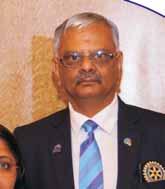
His plans include installing 100 new Rotaract and Interact clubs and RCCs, creating as many Happy Villages and installing 100 low-cost shelters in the district.
To enhance Rotary’s public image, he is planning to create Guinness Records with the help of clubs focusing on aspects such as child safety, road safety and literacy. The district has got five global grants sanctioned for the year. He is excited about signing an MoU with the State health department and German Rotary to check infant/ maternal mortality. “We will be equipping the PHCs with life-saving devices and training village anganwadi nurses in mother and child care,” he remarks.
His goal for TRF is $1 million which he is confident of achieving.
Designed by N Krishnamurthy



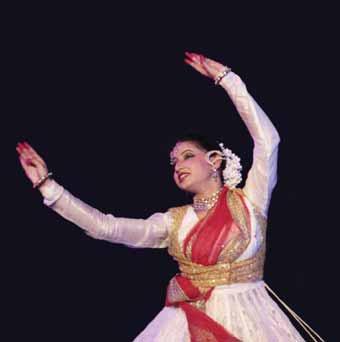
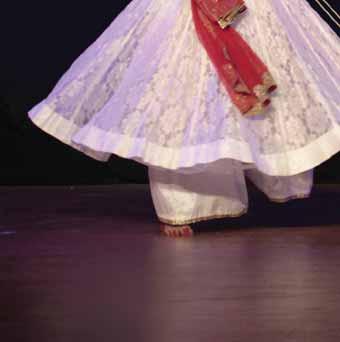
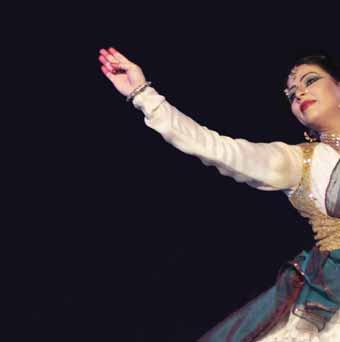
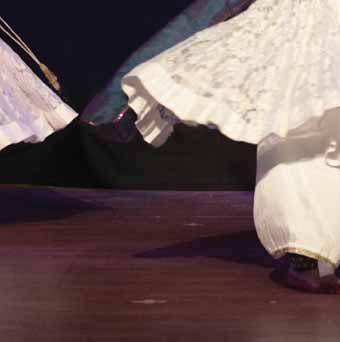

Ihave a distinct recollection of the renowned Kathak dancer and choreographer Gopi Krishna visiting our house when I was very young and we watched the film Jhanak Jhanak Payal Baaje which had amazing Kathak dances choreographed and performed by him. A clearer memory of Kathak is from the dances in the epic movie Mughal-e-Azam which released in 1960. The gorgeous costumes, expansive gestures, movement of eyes and eyebrows and the graceful pirouettes left an indelible impression on my mind. My understanding and admiration increased manifold when I had the good fortune to witness great
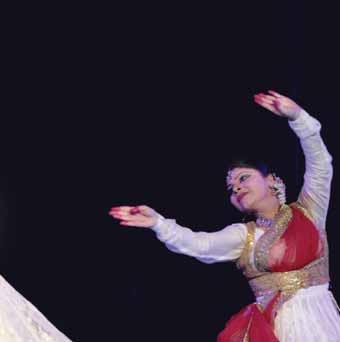
performances by stalwarts like Pandit Birju Maharaj, Kumudhini Lakhia, Uma Sharma, Ranee Karna, Shovana Narayan, the late Pandit Durgalal and many others. The intrinsic beauty of Kathak dance was akin to the ethereal beauty of the Taj Mahal. The combination of delicate nuances and strong rhythmic footwork of the dance was as extraordinary as the intricately carved engravings in the arches and lattices made of solid marble. Little wonder that Shah Asad Rizvi says of Kathak: “Dance is the narration of a magical story: that recites on lips, illuminates imaginations and embraces the most sacred depth of souls.”

Every classical dance style of India has its own distinct identity. The term Kathak is derived from the Sanskrit word Katha which means story, and Kathaka which means the one who tells a story.
The wandering bards, Kathakars, communicated stories from the great epics and ancient mythology through dance, songs and music in a manner similar to
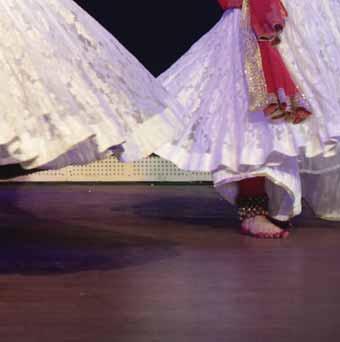

early Greek theatre. Kathak dance started as a performing art during the Bhakti movement by extolling the virtues of Lord Krishna and survived as an oral tradition. During the 16th and 17th centuries it gradually transitioned and adapted to find acceptability in the Mughal courts. It evolved artistically by incorporating Persian and Central Asian themes to the existing repertoire. Like most dances in India, Kathak too declined during the colonial era but resurfaced after independence with a unique blend of Hindu and Muslim cultures which found a pan-Indian appeal.
Researchers suggest that Kathak originated in Benares and migrated to Lucknow, Jaipur and other parts of northern India. The Benares gharana, believed to be the oldest, was started by Janaki Prasad who hailed from a family of famed dancers and is credited with inventing the bols or mnemonic syllables of Kathak dance. The Lucknow tradition attributes the style to a devotee named Ishwari from the Handia village in Allahabad who had a vision of Lord Krishna appearing in his dream and asking him to develop dance as a form of worship. Ishwari taught his descendants, who in turn continued to teach the dance through an oral tradition to six generations. Bindadin Maharaj and his brother Kalika Prasad brought a renaissance to the Kathak dance and raised it to a highly polished level. The Jaipur
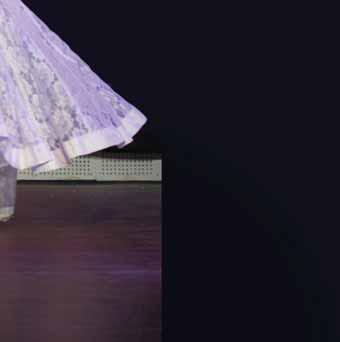
gharana traces its origins to Bhanuji, a renowned Shiva Tandav dancer, who was inspired by Krishna when he visited Vrindavan. He returned to Jaipur with his grandsons Laluji and Kanhuji and started teaching the dance. The theme centred primarily on legends from the Bhagavatha Puranas extolling the divine Krishna, His lover Radha and the gopis or milkmaids. The depiction of the love between Radha and Krishna was symbolic for the love between the Atma, the soul within and the Paramatma, the Cosmic soul.
During the Mughal era, Kathak became more of an entertainment by courtesans for the aristocrats and the religious themes were replaced by more abstract dances. More prominence was given to elaborate pure dance pieces with intricate footwork patterns known as Tatkars and Tukdas. It evolved further by imbibing the influences of several cultures like the swirling movement of the Sufi dancers and the exotic costumes, jewellery and even a transparent veil worn by medi- even a transparent veil worn medieval harem dancers. But durin g the British colonial period the courtesans were ostracised as “nautch girls” and Kathak dance began to decline due to lack of support and patronage. Since the stigma was for only for female dancers, the Kathak teachers continued to train boys to perform and preserve the tradition. The post-colonial era witnessed a healthy emergence of a culturally enriched dance style that gained popularity across India.
Amodern recital consists mainly of three segments that are performed with a live orchestra. It begins with a salutation or vandana to God, the Guru and the musicians. This is followed by a pure dance recital where the dancer displays virtuosity through speed, precision and artistry. It starts with a Thath which is the slow graceful movement of eyes and hands and gradually builds up momentum with a series of elaborate sequences that end in a freeze. Sometimes the dancer interacts with the audience with a Padhant, which is a rhythmic enunciation of the dance syllables before demonstrating it with Tatkar or footwork. An exclusive aspect of the footwork is deftly making each bell of the ghungroos tied to the ankles resonate in perfect synchronisation to the tabla beats. Progressing from the micro to the macro, the highlight of a Kathak performance is the gravity
defying spins known as chakkars where the dancer circles around the stage, dancing circles in rhythmic patterns and finishes with a dramatic flourish. The costume of the female dancer is designed to enhance the beauty and grace of the pirouettes which earn maximum applause from the audiences.
Pali Chandra, Kathak guru and Director of the Gurukul Dance School based in Dubai, Switzerland and Bengaluru, says, “The artist and the activist has truly come a full circle in the last 25 years of Kathak! I am now exploring the other unique facets of this classical dance form. Our team members are researching on more intense themes like depression, child abuse, Parkinson’s, Alzheimer’s and how dance can express the impact of trauma these diseases can bring. Kathak has immense potential to educate and build awareness around these topics. About time we start making substantial difference and build an empathetic audience. And the audience has responded beautifully to this across continents.”
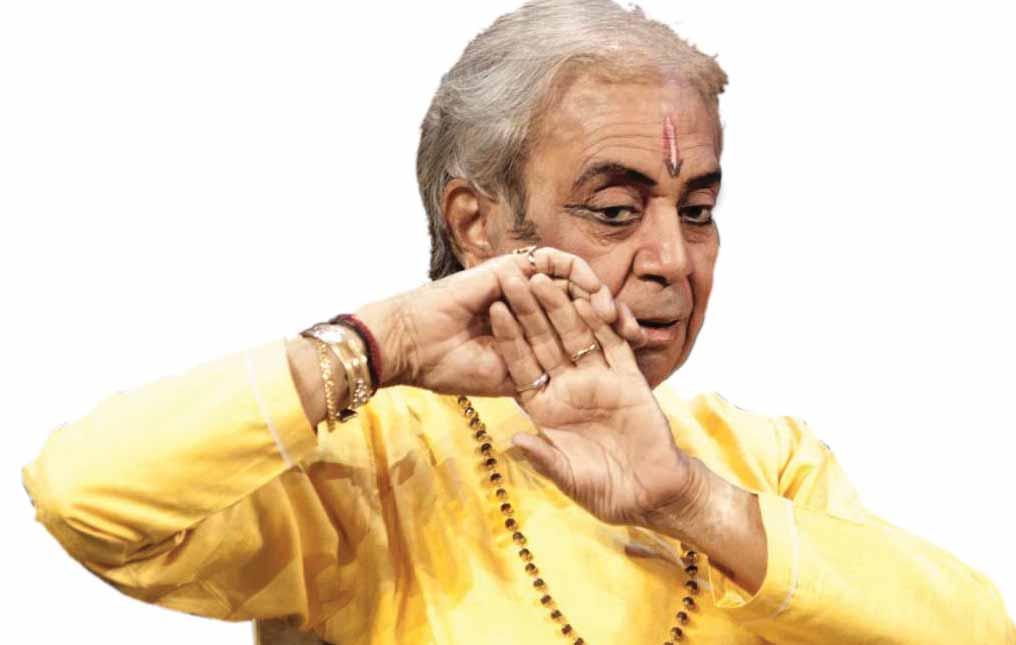
Kathak Kendra, a premier dance institution which is a unit of the Sangeet Natak Akademi, India’s national academy of music, dance and drama, New Delhi, is primarily dedicated to teaching Kathak and also offers
Kathak exponent Pandit Birju Maharaj.
courses in Hindustani vocal music and the percussion accompaniment, Pakhawaj. Established in 1955, Pandit Shambhu Maharaj, the celebrated guru of the Lucknow gharana, used to be the head of the department. He was a noted exponent of the bhava (emotive part) who revived several classical thumris and bhajans and added them to the Kathak repertoire. He trained several renowned dancers like Kumudini Lakhia, Damayanti Joshi, Bharti Gupta, Gopi Krishna, Maya Rao and Sitara Devi. After his demise in 1970, his nephew Birju Maharaj, a noted Kathak dancer and guru in his own right, became the Head of Faculty and remained the Director of the institution till 1998. He adapted the dance, which used to be staged for small gatherings in temple courtyards or Mehfils, to appeal to large gatherings in the modern proscenium theatre, and choreographed several noteworthy ballets. Kathak, which was essentially a solo-dance format, was gradually adapted for thematic group presentations to cater to a cross-cultural audience. Some of the notable ballets presented by the ballet unit repertory wing are Taj ki Kahani choreographed by Krishna Kumar with music by Amjad Ali, Shan-e-Audh, Kumara Sambhav and Dalia choreographed by Birju Maharaj with music by Dagar brothers and mythological
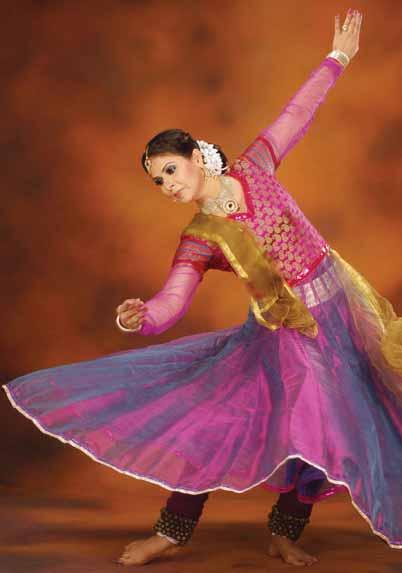
themes like Govardhan Leela, Makhan Chori and Phag Bhara.
Birju Maharaj performed these ballets all over the world along with the dancers of Kathak Kendra and brought worldwide recognition to this traditional dance form. The living legend and a great perpetuator of this art form says, “I wish to create an atmosphere which aims at bringing back to dance all that sensitivity and delicate aesthetics which are threatened in this age of violence. Art has to exult and elevate.”And the inherent beauty of Kathak dance continues
to do just that. The dance has adapted to the changing times by modernising without compromising on traditions. It has moved beyond the Radha Krishna theme by including classics of poet Kalidasa, Sufi songs, thumris and compositions of contemporary writers. Kathak dance survived and will continue to live on because “stories have to be told or they die, and when they die, we can’t remember who we are or why we’re here,” as Sue Monk Kidd rightly said.
Designed by N Krishnamurthy
rally after successfully completing a 4,600-km journey from Kanyakumari to Khardungla, Leh, last year.
Kathmandu, in 40 rais awareness the way for the BetiBachao,BetiPadhao
rand ambassador ho tho aisa,” says Rtn Om Prakash Modi of Rotary Club of Raigarh Steel City, D 3261, speaking about Sunita Singh Choken who cycled 5,000 km from Somnath in Gujarat to Kathmandu, Nepal, in 40 days, raising awareness along the way for the Beti Bachao, Beti Padhao campaign.
Beti Beti Padhao
Sunita, an honorary member of RC R ewar i Ma i n, D 3011, w as h oste d b y severa l Rotary clubs along her journey. This was her secon d so l o cyc li n g
woman from Haryana to have climbed Mount Everest. But it is her thathasmadeherfamousthrough -

that has made her famous through out country. in a in Alwar district of she a for was on a hill. Later that into passion for mountains.” To realise her
Sunita started off as a mountaineer before being known as a cyclist. In 2011, at 25, she was the youngest woman from Haryana to have climbed Mount Everest. But it is her cycling that has made her famous throughout the country. While schooling in Kishorpura, a village in Alwar district of Rajasthan, she developed a liking for trekking “as my school was on a hill. Later that developed into passion for scaling mountains.” To realise her
Sunita Singh Choken, mountaineer and cyclist.


dream of climbing the highest peak in the world, Sunita’s father, a BSF inspector, even took a loan to meet the huge expenses.
She belongs to the Gujjar community, a pastoral ethnic group that “still has a very low education rate. Child marriage is a huge challenge in my community. So, I decided to address this cause,” she says. One of the child marriages she witnessed as a school student was that of her neighbour, a two-month-old baby girl! “She was placed in a decorated thali and passed around the agni kund and vowed into marriage to a baby boy. That disturbing incident is still fresh in my mind.”
Recipient of the Nari Shakti Award 2016, she recalls how she had to stand up against her own community and relatives many times. If she had to seak police intervention to stop such child marriages, “the community will stop inviting me or my family to the weddings and start keeping them a secret. So, I began visiting primary schools and meeting parents. I would talk to them about how much more girls can achieve if they were given education. I would give them my own example.”
Through this rally she wants to send out a message to the girls, “that you should dare to dream and have the courage to fulfill your dreams as each one of you has the potential.”
Enter Rotary
After successfully scaling Mount Everest, she was invited by RC Rewari Main to address one of their club
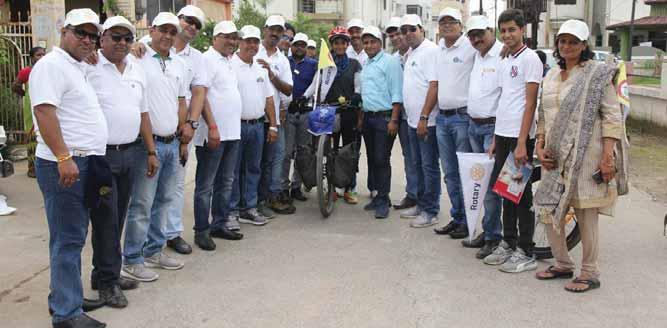
meetings, “and I was inducted as an honorary member a month before my second cycling rally.” Her first rally was to campaign for a ‘Green India’ when she planted over 200 saplings across
several cities. The journey also made her the first Indian woman to cycle solo from Kanyakumari to Khardungla.
“At that time, I did not know anything about Rotary,” she says. But three Rotary clubs in Dharmapuri and Perungudi in South India heard about her rally and came forward to help her. “The Rotarians were warm and kind and supported my cause. That touched my heart. I did not know them but they came looking for me and offered help.”

When RC Rewari Main flagged off the second rally, “I did not know that I would be taken care of like this. I was cared for like I was their own child.”
What makes Rotary even more special to her is that “sometimes Rotarians would stand 20 km before my pitstop and
greet me. I was hosted at their homes and fed freshly-cooked home food. My clothes were washed and dried overnight, my cycle serviced and washed clean without me even asking. This was mind-boggling because they had met me only for the first time.” One of the most interesting projects that touched her heart was the massive rehabilitation work done by Rotary in Gujarat after the 2001 earthquake. “I visited the Rotary Village and schools set up post the earthquake and the Rotarians have done an amazing job.”
Her route map was modified a little depending upon the location of the Rotary club hosting her. This time around she planted close to 7,000 saplings along with Rotarians throughout the journey. “The power of Rotary helped me complete this rally successfully. I could promote both Beti Bachao, Beti Padhao and Green India.” She was hosted by several clubs and “after this journey, I realised that India is the repository of unity in diversity, and Rotary, with all its diversity, is one and the same, be it in India, Nepal or elsewhere.”
This park in Mankada, a hillside village in Kerala, is quite different from regular parks. Along with all the play equipment, the park is also equipped with abacus apparatus on its wall, and the compound wall has geometric shapes, mathematical operations and equations, as also the maps of the local region Mallapuram, India and the world, in braille. It is a ‘tactile pedagogy park’ specially designed by the Rotarians
of Rotary Club of Manjeri, D 3202, for visually-challenged.
Why should the differently-abled be any different from a normal child and why can’t a visually-impaired child enjoy the open air and feel the breeze on her face as she goes up a swing, and also learn mathematics, geography and more, asks Club President Dr M J Sujith, elaborating on the features of the special park.
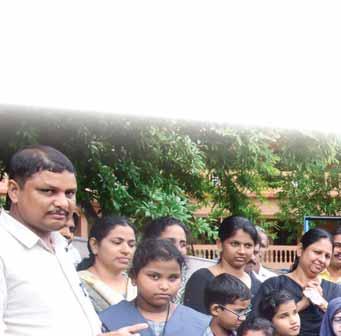
The genesis for the park began when the Rotarians brainstormed
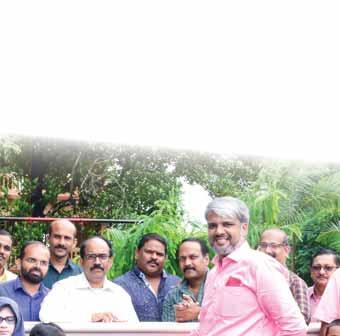

various learning methods with the teachers at a school for visuallychallenged in the town. This school was an initiative of Chandrasekaran Nair, a war veteran who lost his eyesight in a shell explosion. He was given special training by the Army to enable him to spend his life purposefully. On his return to his hometown, Nair came up with this school which now has 83 visually-impaired students. “He is always on the lookout for new ideas and tools that will make learning easy
IPDG P M Sivashankaran inaugurating the Tactile Pedagogy Park in the presence of RC Manjeri President Dr M J Sujith (right) and students of the school.
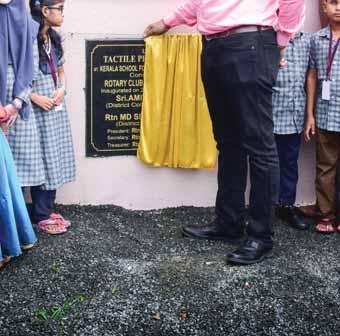

Visually-challenged children feel and learn from the facilities at the park.
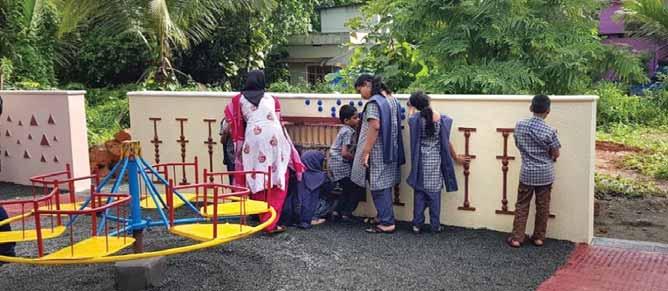
and purposeful for the blind. When we discussed this idea of a special park which includes a play-way method of learning, Nair was totally interested and gave us several inputs while working on the park,” says Sujith.
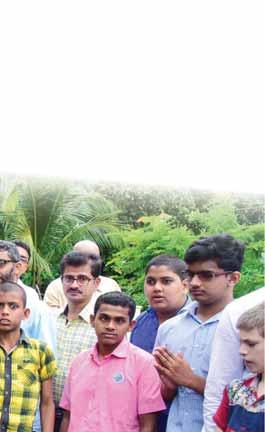
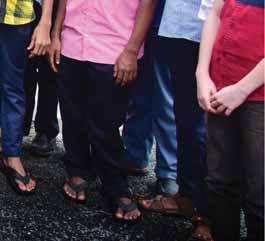
The park, designed by Abdulla, a new generation architect, is an uncluttered, open space, big enough for children to move around comfortably; the flooring is textured uniquely so that they can ‘feel’ the shapes, sand and pebbles under their feet. “The entire idea was so distinct and interesting that it drew all the members of the club in one way or the other. They came up with different ideas even when the construction was underway and we reworked on some of them. Our motive was to give the best to these children and help them appreciate the world through the rest of their sense organs,” he says. A special committee headed by M S Seshan monitored the construction and executed the novel ideas. The total cost, `4.5 lakh, was met with contribution from members and some generous philanthropists.
School Principal Yashir, excited about the concept park, says that it has benefitted the teachers much more as the classes have become livelier after visits to the park everyday. The children understand the concepts better, touching and feeling the models, and later discussing their learning in the classrooms.
Loss of sight does not stop these children from dreaming big. Haroon
Karim for instance, a partially blind student studying in Class 9 in this school, dreams of becoming a computer engineer. “You must see his fingers move deftly across the keyboard. He has a YouTube channel of his own. Like him, each of these children are gifted and we are happy that Rotary has given us the means to do something in our own small way to enrich their knowledge,” says Bharat Das, the Project Contact.
The park was inaugurated in June by the then DG P M Sivashankaran. It has become so popular in the region that the club is flooded with enquiries for replicating it in other areas. The Kerala State Council for Education and Research has acknowledged it as an innovative project, while the Directorate of Education and Training ranks it as one of the three best innovative training methodology, says Das.
The club has earlier provided electric wiring, drinking water facilities and computers specially designed by the IIT, Chennai, and an audio library for the school with the support of a matching grant from TRF and RC Orlando, Canada. Two more projects — a swimming pool and providing Kindle tabs for the children — are being planned by the club for the school.
Contrary to popular perception, Rotaractors slide into the role of Rotarians like duck taking to water in RC Kakinada, D 3020, with its IPP Chodavarpu Murthy, a past DRR, leading his team in the year-long platinum jubilee celebrations last year.
What is more, the club is blessed to have some outstanding leaders over the past 75 years having produced two district governors and sponsoring over 10 clubs, all of which have contributed much to the community in Kakinada, says PDG Lakkaraju Satyanarain alias Tikku, who is also an ARRFC for
V Muthukumaran
Districts 3020, 3150 and 3160. “We celebrated both the golden jubilee of the Rotaract movement as well as our club’s platinum jubilee from July 2017 with several projects to mark the historic occasion.”
Sixty-six members have put in more than 40 years of service in the club. “Forty of them attended a special felicitation meet organised in their honour and shared their nostalgic moments and precious experiences highlighting the magic of Rotary and its fellowship. PDGs Ravi Vadlamani and spouse Rajalakshmi were present as chief guests.”
With the club being the second highest giver to TRF in the district, it hosted the Foundation Seminar presided over by RRFC Avinash Potdar. “It was a huge success with a registration of 700 delegates, boosting the morale of our club members.”
A personality development and career guidance workshop for college students, flash mob by the Interactors to commemorate the World Polio Day and an inter-club tennis tournament were some of the other programmes. The club also honoured past DRRs in an event organised to mark Rotaract’s 50th anniversary.
Interactors perform a flash mob.
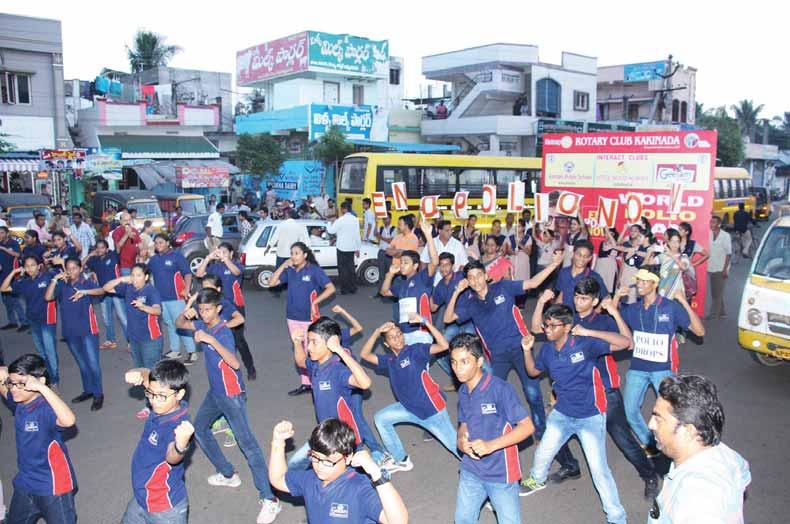
A crematorium set up at a cost of `2 crore in 2014–15 is one of the club’s milestone projects. “It was a joint effort of all the three clubs in Kakinada,” says Tikku. The Netaji Municipal School adopted by the club has benefitted hugely by a slew of Happy School projects like donation of play equipment; benches, desks; and installation of a handwash station.
With the help of Srikiran Institute of Ophthalmology, regular eye camps are being held at the research institute-cum-hospital. “We would have done over 30 eye camps and hundreds
While IPP Chodavarpu Murthy is a past DRR, the present President Y Jagan and the President-elect V Bhagavan are former Rotaractors.
of cataract procedures so far. A notable feature is that a number of global grant projects are undertaken on a permanent basis at this institute where 80 per cent of the patients get free treatment,” he says.
Apart from the immediate past president Murthy, two more former Rotaractors — Y Jagan and V Bhagavan have been chosen to lead the club for the current year and the next. The club takes pride in the fact that its charter president was the late Maharajah of Pithapuram, SRVK Surya Rao Bahadur, who had built a strong foundation of the club in its nascent stages. With 110 Rotarians and targeting a membership growth of 10 per cent, the club gives on an average $10,00015,000 annually to TRF.
While basic education and need-based skills are provided at Sumedha, a school for differently-abled children run by Vishwajaneena Trust in Udupi, a survey highlights that there are nearly 2,800 people who are mentally-challenged and this includes 1,300 children below 14 years of age who need skill induction.
The school, constructed in 2007 to cater to 100 children, accommodated only 50 students due to lack of sufficient resources. Flooded with requests from villagers to admit more students, the Trustees contacted Rotary Club of Udupi, D 3182, to provide facilities such as transportation, teaching aides, furniture, physio care equipment and computers so that the operating environment can be enhanced to benefit more students.
“The villagers, mostly farmers, don’t have money to send their children to far-off places for training and rehabilitation. They depend on this school to shape their children,” said
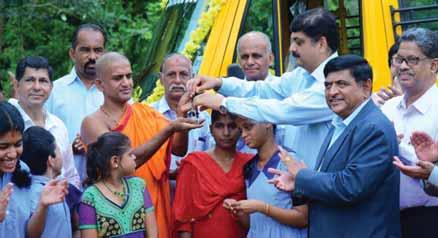
DG Abhinandan Shetty handing over the keys of the bus to Vishwasprasanna Theertha Swamiji, Chairman, Vishwajaneena Trust. IPDG G N Prakash is also present.
Ramachandra Upadhyaya, IPP of RC Udupi and Project Coordinator.
The club, under a global grant with support from RC Central Chester County, D 7450, and TRF, equipped the school with two buses, furniture, physiotherapy, occupational therapy and fitness equipment, an audio-visual equipment and computers for office and children, at a total cost of `30 lakh.
DG Abhinandan Shetty and Vasanth Prabhu, a member of the foreign club and who hails from Udupi, handed over the facilities to the Trust Chairman Vishwaprasanna Theertha Swamiji, in the presence of DRFC Sadananda Chatra, IPDG G N Prakash, DGND Rajarama Bhat and RC Udupi President Chandrashekar Adiga.

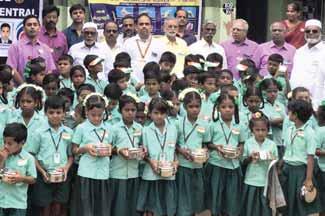
Household items such as vessels, gas stove, mats, bed spreads, along with educational material like notebooks and stationery, were donated to a family affected by a fire mishap at Kondangi village.
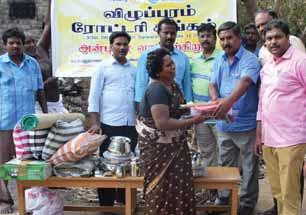
Ablood donation camp was held at J A College for Women with good response from the students. The collected blood was given to the Government Hospital in the town for helping needy patients.
Stainless steel snack boxes were given to students of the Panchayat Union Primary School at Kodipallam village. The club donated sports equipment to the Government Nandanar School and health supplements worth `75,000 for TB patients.

DG Rajiv Sharma distributed school uniforms and shoes to 80 students of Ashra School, a remand home at Dongaon village. A number of Rotarians took part in the event.

Avocational training programme for beautician course was conducted for underpriviliged women by the club in partnership with its Inner Wheel members. Thirty-two participants were given certificates at the end of the programme.
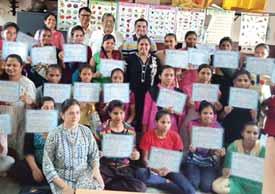
Ahandwash facility was installed at the Government High School at Sang Dhesian village near Goraya. The students also organised a demo to teach children how to keep their hands clean and hygienic.
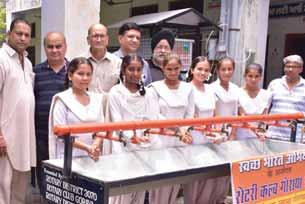
Over
500 computer books worth `14,000 were donated to a library at Tatagudi Centre School in the town. Club President S Chaitanya and other members were present at the event.
Benches and desks were donated to a government high school in the town as part of the club’s Happy School project. The project was done with the support of a global grant with TRF and RC Sao Paulo-Pacaembu, D 4610, Brazil.
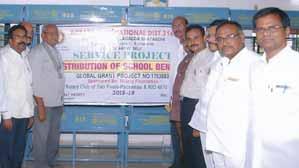
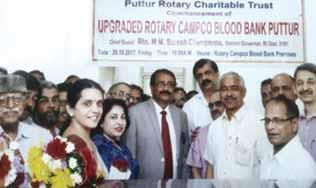
The club added a cell seperator at the Rotary Campco Blood Bank which was set up in 1998.
The equipment costing `85 lakh was installed through a global grant with RC Tampa Noon, D 6890, US and TRF.

Arally was taken by the students of the Government High School in Sugur village to create awareness on road safety and the need to wear helmet/seat belt by the motorists.

Around 12,000 children were screened and those detected with visual deformities like squint and lazy eye were referred to a hospital for follow-up.
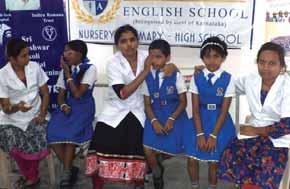
Raincoats were donated to traffic police at Perumbavoor and Kalady police stations with Club President Dr P Prasannan inaugurating the project.

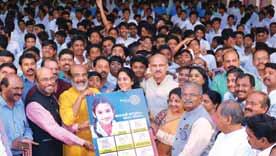
Kerala
Finance Minister Dr Thomas Isaac inaugurated a WinS project at Leo XIII Higher Secondary School in Alappuzha in the presence of DG EK Luke, Zonal WinS Coordinator R Regunath and DGE Thomas Vavanikunnel.

Solar lamps were given to the students of a school in Kangeyanallur village. The club also organised a dental camp at the school.

The handwash station built by the club at the Porur Panchayat school in Chennai will benefit 700 students studying there.
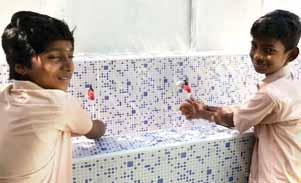
Over 300 women working in the tobacco manufacturing units at Konabari and Parbotta villages in Malda district were given anti-pollution masks by the club to safeguard their health.

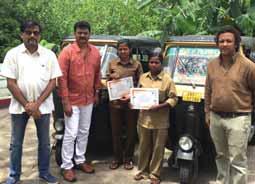
Under Project Ashray, the club members donated tarpaulins, plastic sheets, dress materials and food items to the flood-affected people in the surrounding villages.

Stationery material were given to 100 children at the Government Middle School at Pachpedi village near the city.
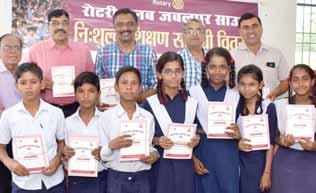
Lakshmi and Sahanara — the island’s first two lady auto drivers — were felicitated by the club as part of its ongoing Aabhaar project, which celebrates unsung heroes.
Iwish for everyone to have a tremendous amount of resilience because it’s truly a useful and handy quality to tuck into your psyche. It’s the kind of sure-mindedness that makes the wife tell her jittery husband, “We are wealthy, dear. One day, we’ll also have money.” It’s the kind of thinking that needs to seep into our collective consciousness — to be sure within ourselves even if we can’t always be sure about life. It is empowering and resilient thinking. It’s a quiet steady current at the best of times and a quietly active stream in motion at the worst of times. That’s probably why it is best summoned by silent stillness.
Often, after venting, there’s a shift downward to heap blame and rage on ourself. But no! You have to nip your negativity right that very instant. Because later we will tend to regret and say, “If only I’d…” The words “If only…” are despair-traps. Step nimbly away from them. As Ajahn Brahm says: “The past is ‘iniffable’. You can’t say ‘if’ about the past. You don’t know what could have happened. So, how can you say what you have done or not done is a mistake?”


Go still. Psychotherapy advises anybody who has received a pink slip, suffered enormous financial losses, been passed over for promotion or jilted by a lover to go utterly still. Don’t give in to panic, anger, sorrow... justbecome as still as the Buddha. This is where resilience works. Later, you may release the pressure of the pain from your mind by crying, shouting or punching a pillow, but meanwhile the stillness, the silence has helped resilience to quietly enter and permeate your spirit. Thus, your core remains sound even as you vent your feelings. And you don’t take any kind of reckless, self-harming step.
It is wise and practical to remain in the present and, as the Master says, “Enter the dance of the situation.” Say “what’s the next step I can take?” Say it calmly and you don’t get trapped in a stormy, debilitating drama. When you are calm, you can be in the beauty of any situation, in the mystery, in the intrigue, in the ‘what next?’ Everything that’s happening is a process and we are part of that process — we stumble, rise, roll, rise … This happens until we learn that we have to stop putting so many negative labels on life and start flowing quietly with it. We take the steps required with a peaceful mind, with harmony inside.

you won’t crash. It holds good for us too — we keep our spirits high, our sights trained above the blues. Due to our preoccupations, we did not have time earlier, now we’ve been gifted, blessed with loads of time — to rejuvenate, re-energise, get inspired. Fix healthy meals and become healthier. Exercise a bit and get fitter. Read great books, listen to inspiring talk and stand taller. And meditate every day — to imprint tranquility in us.

Keep your nose above the blues. When airplanes cruising the skies run into turbulence, the pilots say, “Keep your nose in the blue.” It means, keep your nose aimed above the horizon and

Self-care has a beautiful, reassuring, protective, resilient energy and aura. It is the sunshine that dissolves the shadows in you and you don’t feel it’s the end of the world. Since negativity sells, catastrophes and cruelties rule the headlines. That’s why I advise against reading or listening to the news. The fact to remember is that 95 per cent of the world population is still good-hearted, it’s the 5 per cent that grabs the negative headlines. Please see the vast area of light and not focus on the shadowy corner. With a clear mind, assess your financial resources and assets. You may have to make some changes. Believe me, they will brighten your present and augur well for the future because you’ll suddenly uncover possibilities you hadn’t been aware of earlier. More important: new energies surge and hidden insights emerge. This is the magic of resilience.

Win yourself back. The words of a rishi reach out in their splendid ringing tones and resonate when you’ve gone through a break-up: “Be the One that wins yourself back!” Magnificent! What does the One do? One holds the self together as the doubts and emotions come storming in. One reminds the self: “I am complete with or without another.” You actually surrender to your completeness when you hold the self together. You get a sense of who you truly are — a rock standing firm in a stormy sea. You allow yourself to understand that the only part in you that hurts is the ego. Once you recalibrate your understanding, you can explore what it would be like without the ex, get used to the situation and even entertain the idea of moving on. At such times, it’s heartening to have a few friends who are with you without being callous, indifferent or

judgemental. When those who accept us completely lend us the quiet, supportive energy of their presence, we become stronger and are not crushed by anger, sadness, regret, helplessness or despair. It’s necessary to also keep a check on our wayward thoughts because they are the main culprits that drive us to despair and depression. When a negative thought arises, stem it by wondering, “There is something I’m supposed to learn from this experience. What am I supposed to learn?” It gives meaning, purpose to what you are going through and, because it is pain that is not in vain, it hurts less. More. It gives a lovely lift and lilt to your resilience.

the river bank, a disciple placed two enormous pearls at his feet as a token of his respect. The Master opened his eyes and picked up one of the pearls so playfully that it slipped out of his hand and into the river. The horrified disciple plunged in and swam all day looking for it but couldn’t find it. Finally, wet and exhausted, he roused the Master from his meditation saying, “You saw where it fell. Show me the spot so I can get it back for you.” The Master picked up the other pearl, threw it into the river and said, “Right there!” and went back into his meditative state.

A wonderful anecdote goes thus: When the Master was meditating on
It’s a beautiful teaching. Each of us is a Master or disciple at different times. Pearls or people will drop out of our life. When we let go is when we come up for air. We emerge softer, humbler, simpler. As the Enlightened say, “Storms come not to disrupt your life, they come to clear your path.” Be still and as the mists of misery clear, you will see the path stretching shiningly, endlessly, promisingly ahead of you…
The writers are authors of Fitness for Life and Simply Spiritual - You Are Naturally Divine and teachers of the Fitness for Life programme.


Designed by N Krishnamurthy





The lost art of exchanging handwritten letters is sometimes reclaimed in books.
American historian Audrey Truschke, the author of Aurangzeb: The Man and the Myth, was on a lecture tour in India recently. Her lecture in Hyderabad was cancelled because some protesters had threatened to disrupt proceedings. As she posted on Facebook, the Hyderabad police apparently advised the organisers of the event that several individuals had “written letters protesting my appearance. I was especially looking forward to talking to Hyderabadis about Aurangzeb’s brutal assaults on sultanates in the Deccan in the 1680s and debates concerning what brought about the end of Indian Buddhism in the early second millennium CE.” This was reported in the New Indian Express of August.
Anyhow, disturbed as we should be about incidents such as these, it’s interesting to consider that letters, apart from being conveyors of complaints, threats and fake news, among other less-than-pleasant matters, are also an important element of style used by writers. I read a lovely one recently. It’s called The Guernsey Literary & Potato Peel Pie Society by Mary Ann Shaffer
and Annie Barrows. Published first in 2008 by Bloomsbury, it was reprinted recently; it was also released as a film. In fact, I first saw the film on Netflix and was prompted to immediately read the book, although I had heard great things about it from a young friend quite a while back. To be honest, the title of the novel wasn’t exactly inviting, apart from being a challenge to remember — and that must be the stupidest reason for not picking up a book (more about this some other time!).
Guernsey is an island in the English Channel, part of the Channel Islands, off the coast of Normandy, and is a popular tourist resort. German troops occupied the Channel Islands during the Second World War. But just before they arrived, a majority of the residents of Guernsey, sent off their children to live with relatives and/ or strangers in England, so they would be safe. At the end of the war, some children were never reunited with their families. When London was under threat of Nazi bombing, many children were evacuated to the countryside in a similar manner. Images of families saying goodbye to their children
have been archived and the trauma that many of these children and their families suffered as a consequence of this decision has been written about. For instance, Goodnight Mr Tom by Michelle Magorian is specifically about children separated from their families. The Germans, for some reason, considered Guernsey a strategic location and so their presence there endured and impacted on the lives of the locals during and after the war. Shaffer apparently visited Guernsey on a whim and was forced to extend her stay there because of the airport being shut down due to fog. She took the time to read about the place and its history and was so taken by what she read that she resolved to write about it. When she eventually did write this nearlyhistorical piece of brilliant fiction woven with the threads of letters exchanged between various characters, chiefly writer Juliet Ashton, her publisher Sidney Stark, a pig farmer Dawsey Adams and others, nearly 20 years had elapsed since her visit. Sadly, Shaffer died just before the book was published, and it was left to her niece, Annie Barrows, to complete it. Luckily, she was a fine writer herself, so her finishing touches did justice to






In such a culture, handwritten letters are precious personal gifts. Each book, meeting and letter has value, commands affectionate attention, and never comes cheap.”


the novel. All Shaffer knew was that it would be published in 13 countries.
As Steve Davies, writing in The Guardian of August 9, 2008, says so insightfully: “The Guernsey Literary & Potato Peel Pie Society commemorates beautiful spirits who pass through our midst and hunker undercover through brutal times. Shaffer’s Guernsey characters step from the past radiant with eccentricity and kindly humour, a comic version of the state of grace. They are innocents who have seen and suffered, without allowing evil to penetrate the rind of decency that guards their humanity…”
“Guernsey’s dead will not return. Shaffer’s writing, with its delicately offbeat, self-deprecating stylishness, is exquisitely turned, bearing a clear debt to Jane Austen. She shows, in addition, an uncanny ability to evoke period, miming its manners and mannerisms — not only in the reminders of blitzed London but also in recreating a culture that reveres books. This is at the heart of the novel’s golden comedy. The rarity of books in 1946 reminds us of an age we have lost, of stint and thrift combined with greater amplitude of time.
The stylistic device used to tell the story — letters — defines it as an epistolary novel. But letters alone don’t make an epistolary novel: they can be any kind of documents, including electronic documents, such as diary entries, newspaper clippings, blogs and recordings. There are several epistolary works, both fiction and nonfiction. Among the earliest ones I read, as a child, was Daddy-Long-Legs by Jean Webster, first published in 1912 and still eminently readable. Of course, it is what some people would call a ‘girlie’ book, as also its sequel, Dear Enemy. Not so, Letters to a Young Poet by Rainer Maria Rilke (1875–1926). This is not fiction, not a novel, but a set of ten real, serious letters written by the Bohemian-Austrian poet and novelist to a young aspiring poet named Franz Xaver Kappus. What Rilke says is of relevance to everybody, even though he advises in the context of writing.
Remember, Rilke was only 28 when he started responding to

You are looking outward and, that you must not do now. No one can advise and help you, no one. There is only one way: Go within… Dig deep into yourself for a true answer.
Kappus’ correspondence. What does he say in the first letter? He says: “You ask whether your poems are good. You send them to publishers; you compare them with other poems; you are disturbed when certain publishers reject your attempts. Well now, since you have given me permission to advise you, I suggest that you give all that up. You are looking outward and, above all else, that you must not do now. No one can advise and help you, no one. There is only one way: Go within…Dig deep into yourself for a true answer.”



In the fourth letter, he writes: “I would like to beg of you, dear friend, as well as I can, to have patience with everything that remains unsolved in your heart. Try to love the questions themselves, like locked rooms and like books written in a foreign language. Do not now look for the answers. They cannot now be given to you because you could not live them. It is a question of experiencing everything.” Such fine sensibilities, such wonderful intuition. No wonder he was the poet he was.
Burrow a little and you will discover many epistolary works that will delight your sensibilities and assuage your soul. Do look for them and dip into a few.
The columnist is a children’s writer and senior journalist.
Designed by Krishnapratheesh
Aadesh Sikchi
Rotary means service and our Four-way Test conveys that each of our actions should benefit the needy. We, at Rotary Club of Navi Mumbai, have incorporated the same in most of our functions and operations. To mention a few;
Meal coupon vs Bouquets/gifts
No gifts/bouquets to any chief guest. Instead we provide a midday meal coupon signed by the chief guest and on his behalf the club provides a free meal to the needy. We accumulate these coupons over the year and feed the hungry.
We have our own premises. Apart from planting new saplings, we also emphasise on maintaining the existing trees with the trees bearing the names of the donors. Instead of elaborate celebration of our birthdays/ anniversaries, we pool in the funds and use it for the maintenance of trees. A single tree maintained or grown is equivalent to planting 100 saplings, out of which very few even survive for three years, and only the photos remain! We also plan to plant a sapling in the name of presidents of the nearby clubs and rent out our premises to nearby clubs to conduct their programmes, by which they can also save expensive hotel bills. We also minimise costs by encouraging

joint programmes with other clubs. Our goal is to maximise charity per square feet. Hence, we run medical centre, green nursery, yoga classes etc at our Rotary Hall.
Family and Fellowship sail on the same ship
To attract a Rotarian’s family as members, we encourage active participation of his family. We involve the Rotary Anns in activities such as inaugural address, ceremonial song, master of ceremonies or delivering the vote of thanks. This way we are able to check exits of Rotarians due to family pressure.
When in Rome, look like a Roman Instead of the ‘suit-tie’ culture that we feel takes us away from the common man, we make it a point to wear the Rotary T-shirt for our community service programmes.
Thank our service providers
Most service providers like police, bus driver etc work in tough environments (dusty, noisy and hot climate). We have earmarked special projects like providing AC and fans at police stations with Rotary signage. This has helped us in garnering respect from civil servants. The wheel of Rotary can be moved only by the joint effort of the club and the community. The clubs are the spokes in the wheel and the community is the hub.
To win a war, be in the battle: Clubs must evaluate the substantiality of their projects and ensure that the service is going to those who really need them. It is fairly easy to donate funds or in kind and be satisfied that we have done our part. But members must actually pay regular visits to the community they serve and monitor the work.
Lead to let them light the fire
The pressure to do minimum service projects should balance with the valuable funds contributed by the members. We must reach out to the “real needy”. Involve club directors from the start, to the extent that they should be the chief guest during the service projects ceremony. A responsibility acknowledged with respect is what is needed to bring out the best out of your team/directors. This lays the foundation for having a proper succession plan for a club. Appoint a deserving person as joint director rather than appointing an uninterested /undeserving person.
With the support of IPP Rajeev Maniar and President Anand Dhruv we have implemented most of the above practices successfully and plan to continue the same in the coming years.
The writer is President-elect of RC Navi Mumbai, D 3142.
Last month I attended an understated but classy event in Chennai which, even though my name suggests it, is not my home, or even my ‘hometown’ as the government would describe it. For me Chennai is the place which always serves as a reminder that there are more elegant ways of living life than the one Delhi prescribes or, for that matter Mumbai.
For the record, I have lived in Delhi since May 7, 1958. That is over 60 years. So as Amitabh Bachchan said about his English in a Hindi film, “I can talk Delhi, I can walk Delhi because Delhi Sir is a very phunny city”. This especially so when it
comes to dressing because in Delhi it is not just the ladies who turn out in all their finery — which has the same effect as Colin Powell’s ‘shock and awe’ — the men also preen about like fully-loaded peacocks.
This Delhi practice has been a matter of considerable dissonance between my wife and I. The reason is this. In school the uniform was white shirt with grey pants. In college, when I was staying in the hostel, I saw no advantage in changing this combination and, by the time I found a job, it had become my normal attire. For the best of the last 60 years therefore I have worn white khadi bush shirts.
However, as can happen to anyone who is not watchful, I acquired a girlfriend soon after getting a job. It didn’t take her very long to start complaining about my clothes. Monotonous, she said, and shabby as well. She also asked me to wear shoes which I said I would if she too agreed to wear them. That settled the shoe issue but one day, after weeks of nagging, she bought me two bush-shirts, one bright yellow and one bright blue. Both had checks and I was forced to wear these abominations for the sake of increasingly irritable love and much sought-after peace.
But fortune favours the meek, and after a year or so, she grew tired of me and I was able to revert to

my style. I am reminded of this episode because not having attended a similar event in Chennai for a long time I had forgotten how much of a Chennai man I am at heart. While the wives, sisters and daughters had turned up at the said event looking gorgeous, the men — as usual, I was told — were dressed as if they were going to office, which indeed many of them were because the event was at 8 am. I, too, was dressed in exactly the same way — grey trousers and an off-white bush shirt. Off-white because in Delhi, thanks to the dust and other pollutants in the air, white soon becomes brown which I fashionably pass off as off-white.
The contrast between the ladies and the gents in that enormous hall could not have been sharper, especially for my Delhi eyes where sometimes, if you are looking at them from behind, it is difficult to tell the men from the women. In fact, I know men who spend up to ` 20,000 on a mere pajama-kurta set for use just once or twice. Not so in Chennai, I think. Indeed, I remember a time when the men would turn up in just dhotis, and nothing on top. But that was before air-conditioning had become ubiquitous. Now the New Chennai Man has acknowledged its advent. He puts on a jubba or a chettai , usually white. That for him is the height of fashion.



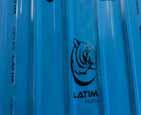
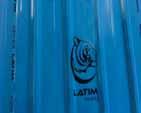








Regn. No. TN/CCN/360/2018-2020
Licensed to post WPP No.TN/PMG(CCR)/WPP-431/2018-2020
Total number of pages in this monthly issue, including cover, 84. Price: `35
Registered with Registrar of News Papers for India 3880/57 Rotary News Published on 1st of every month
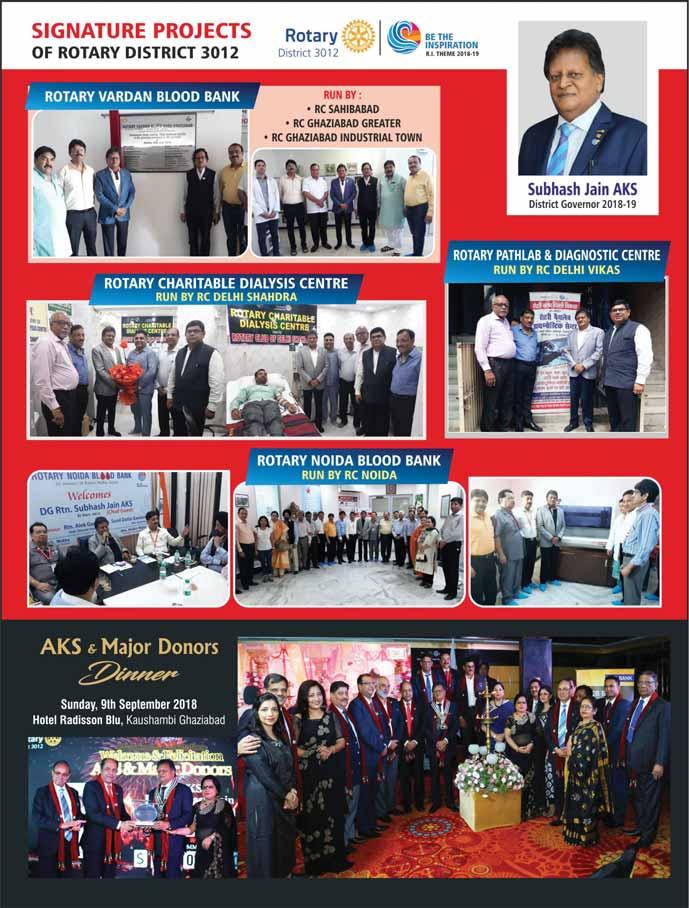
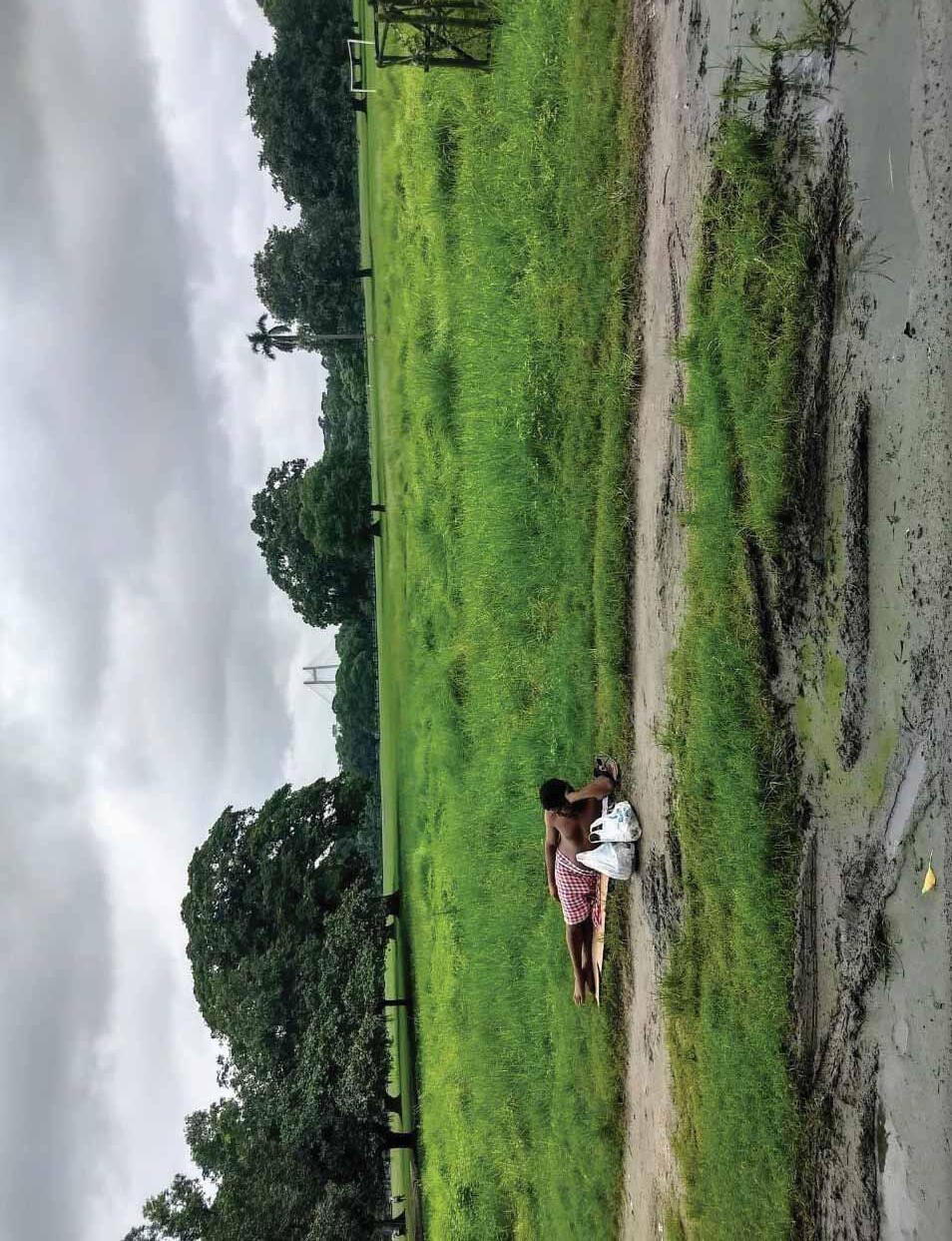
As the sky darkens with rain-bearing clouds, this man is enjoying natural fresh air at a field in Kolkata.